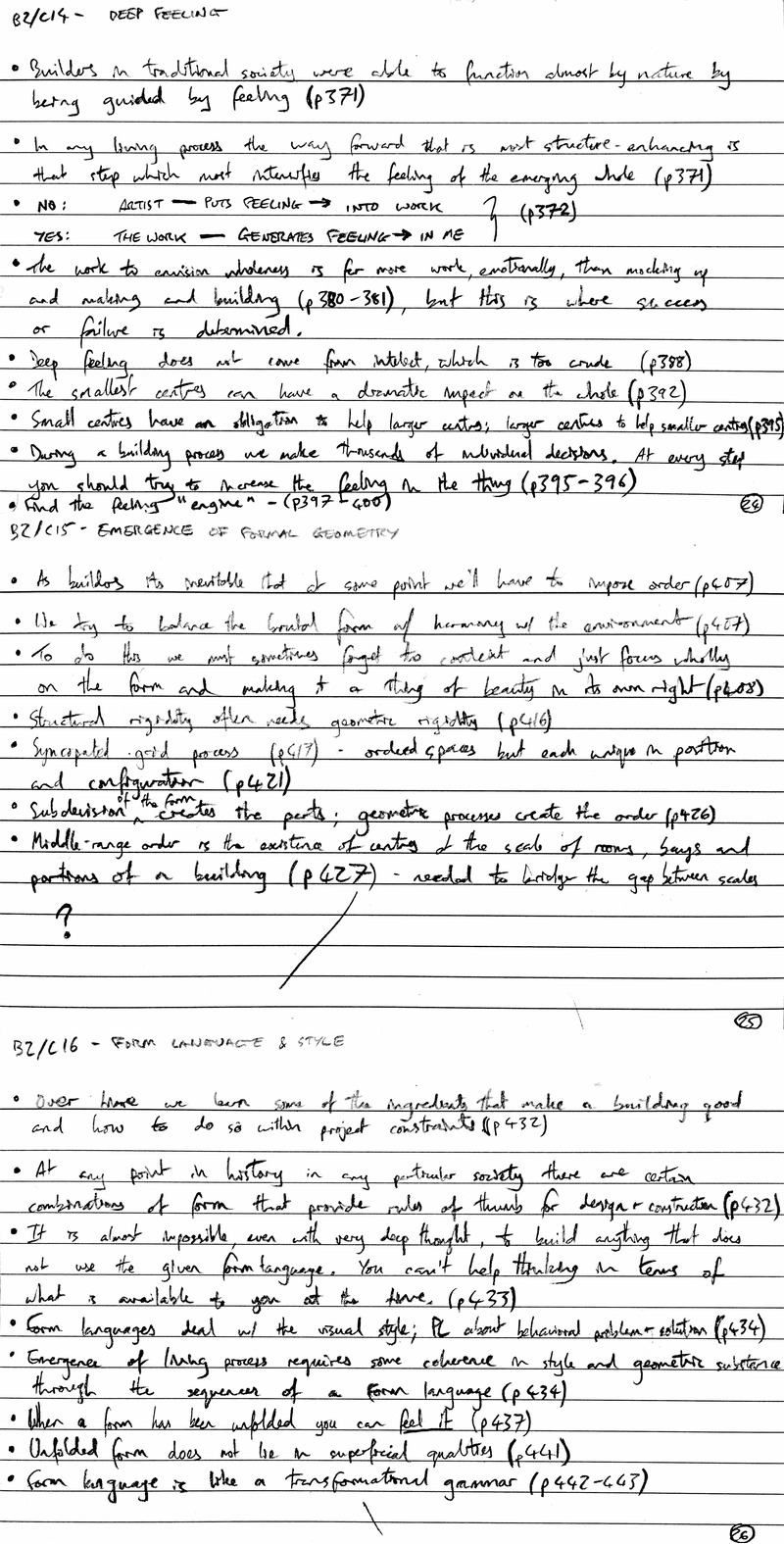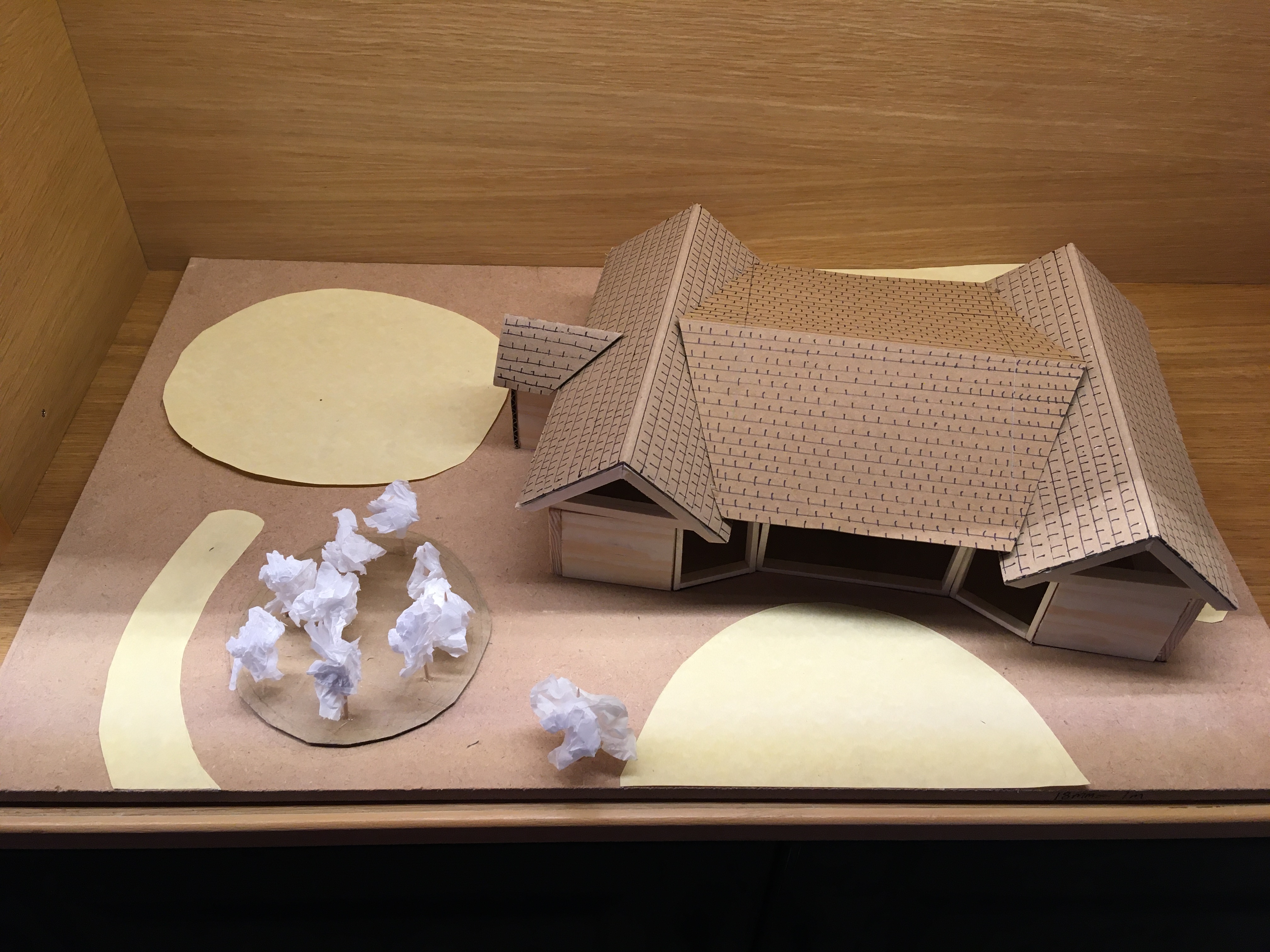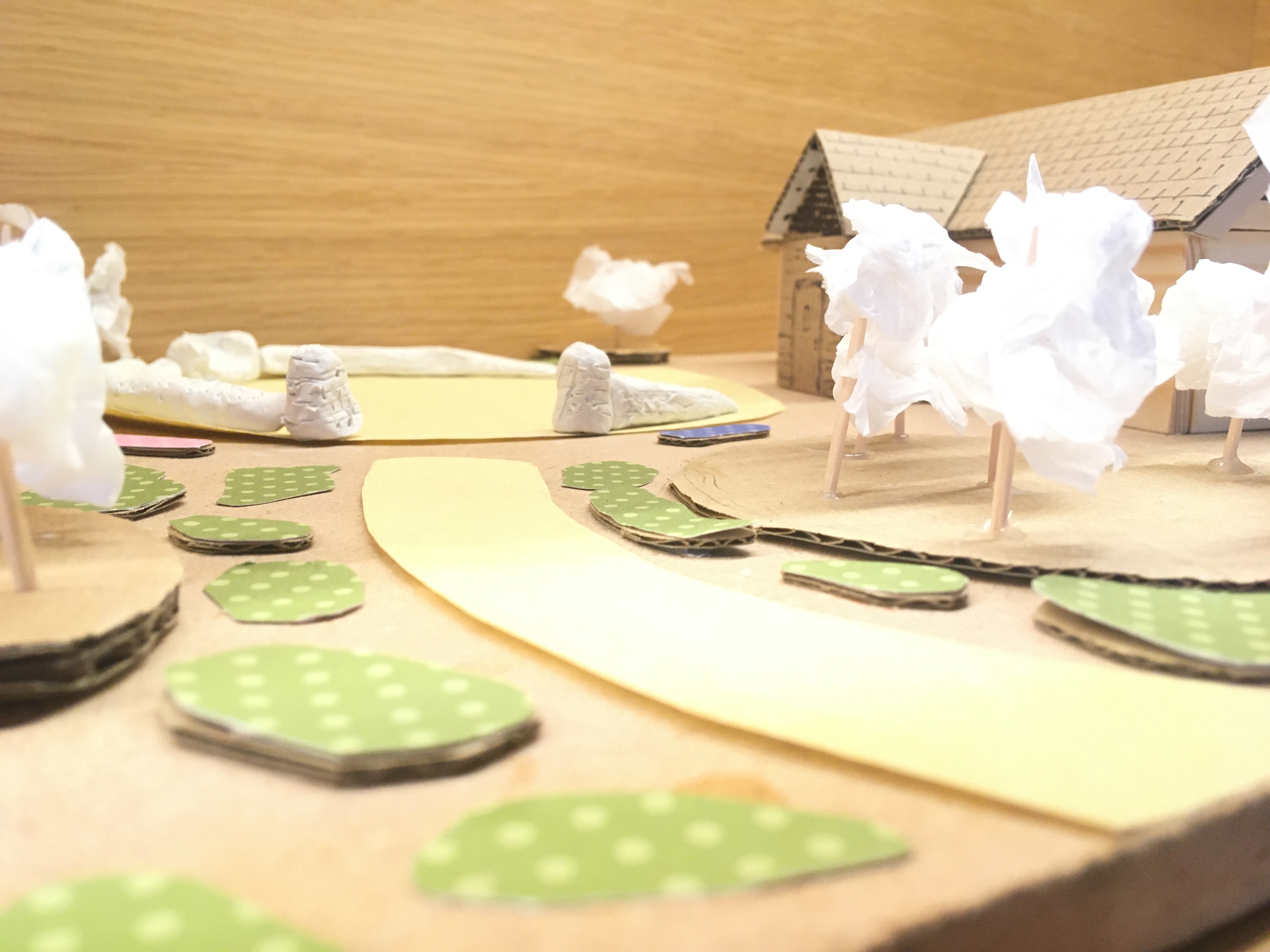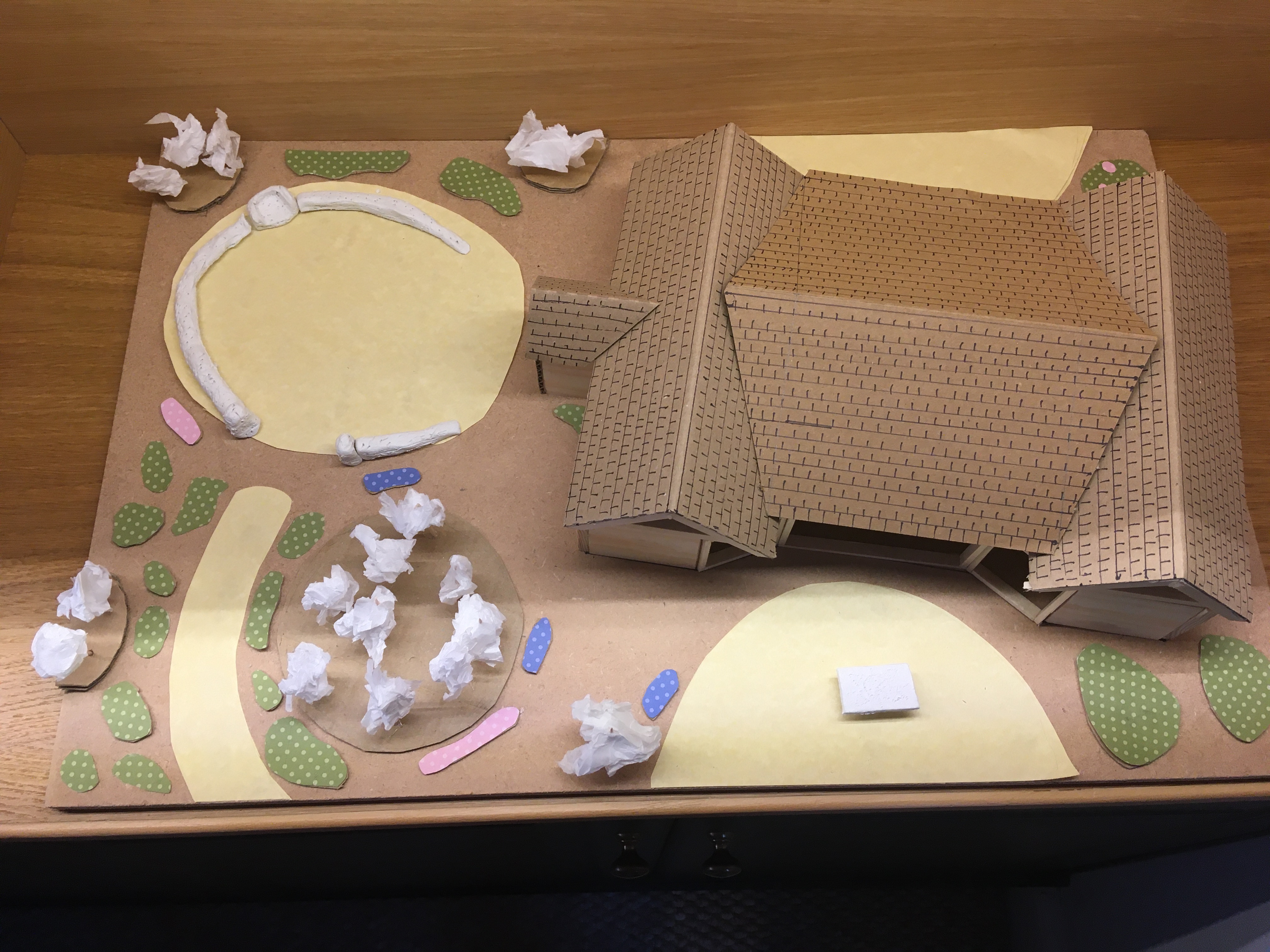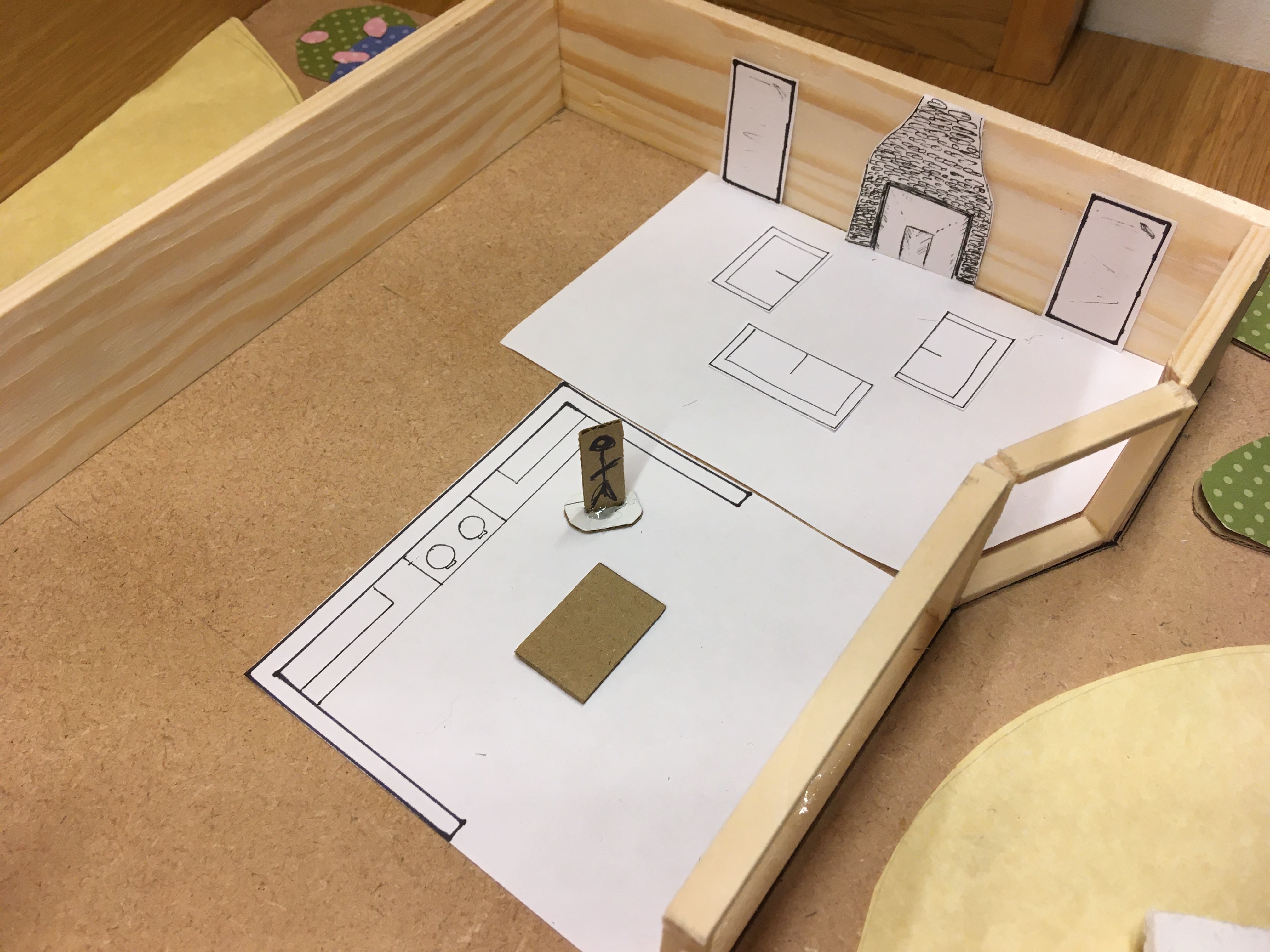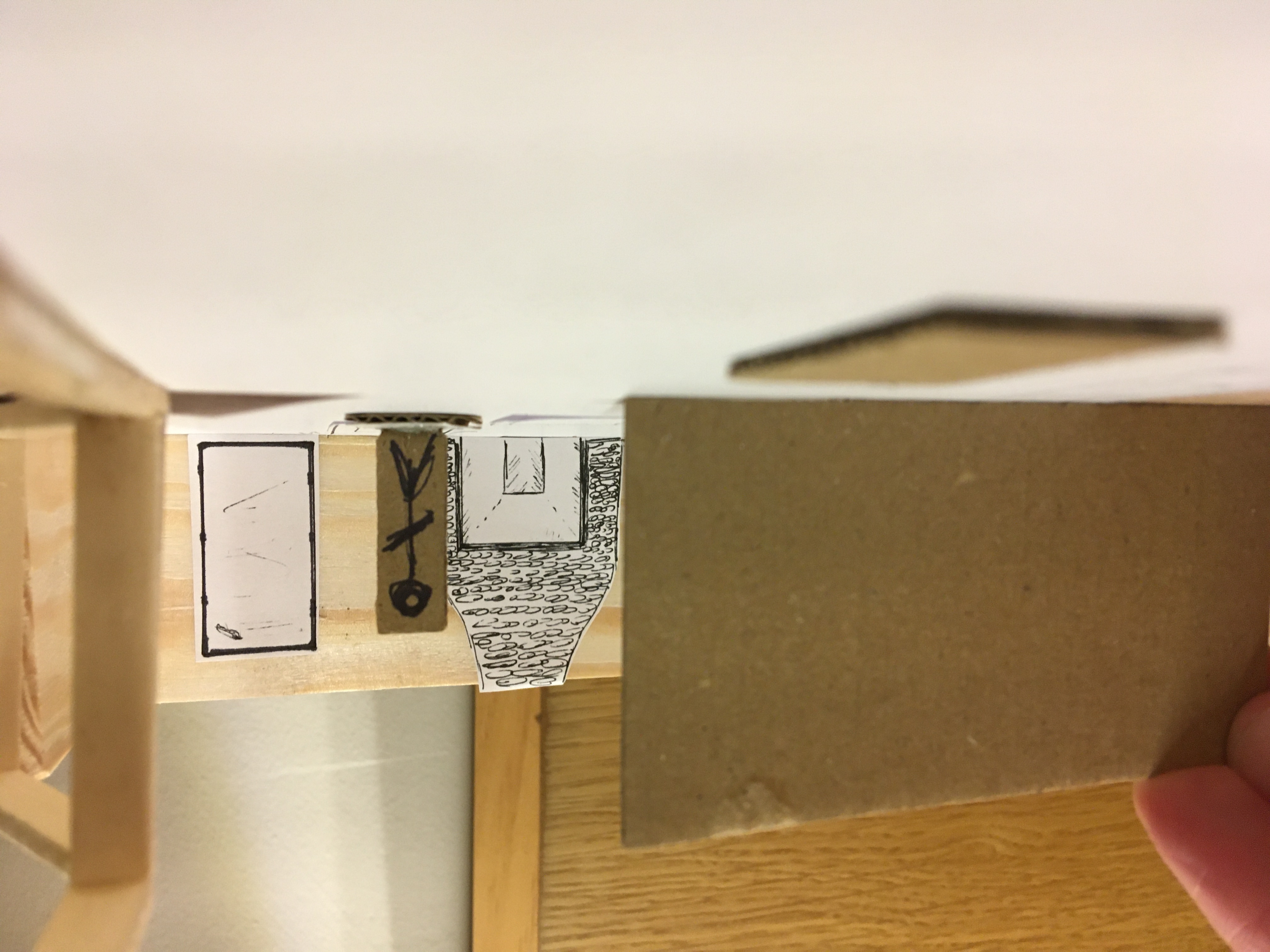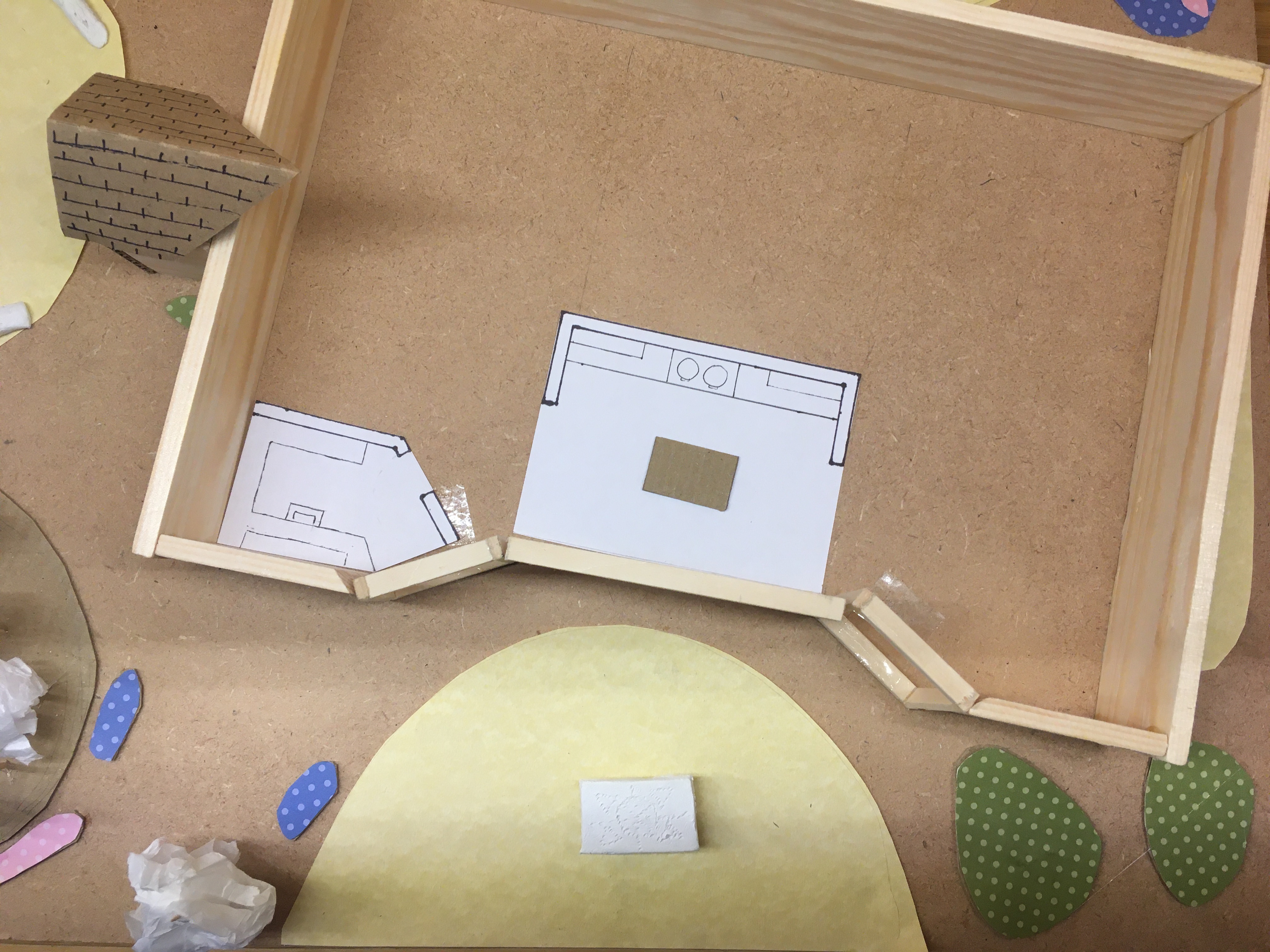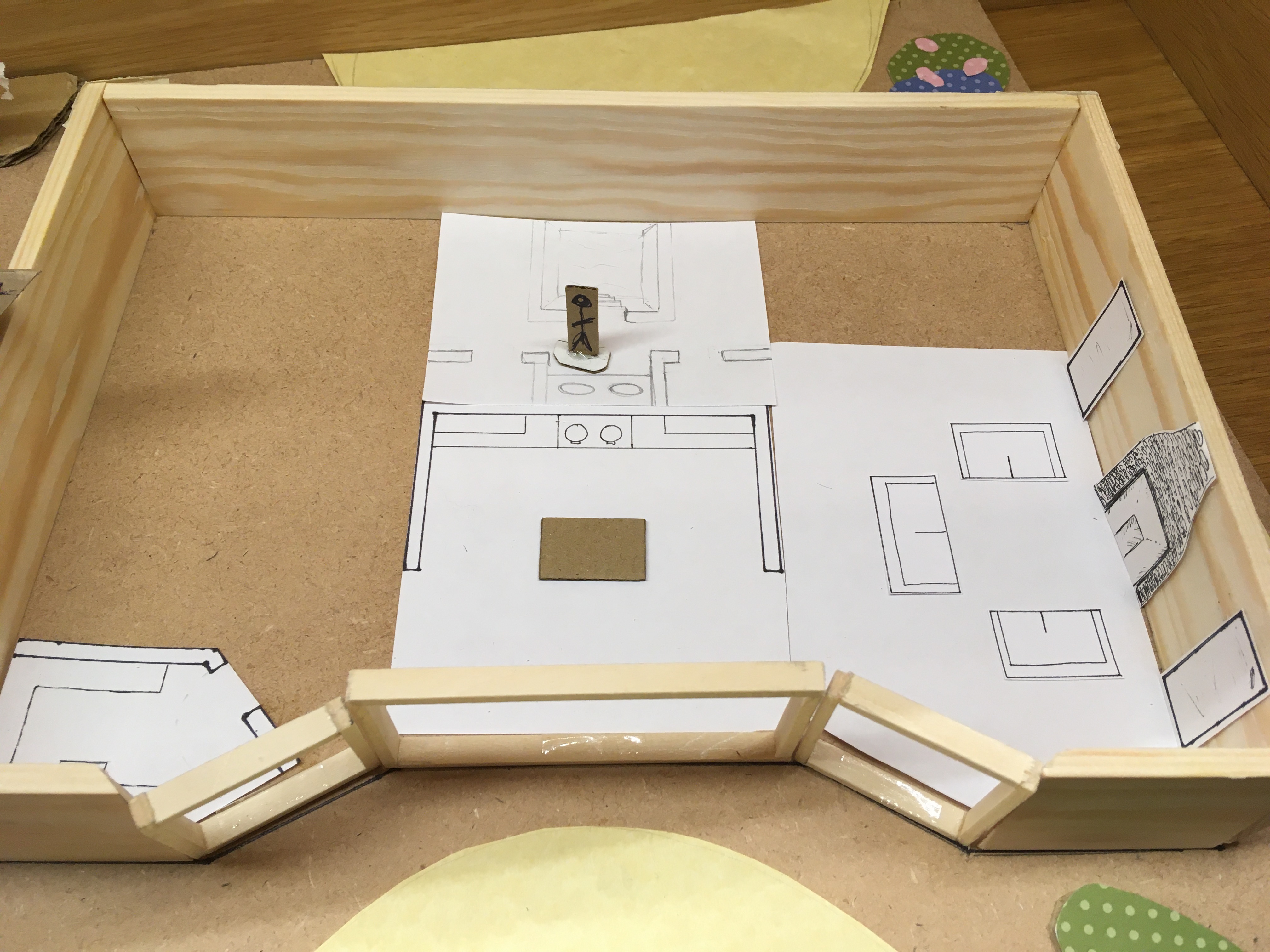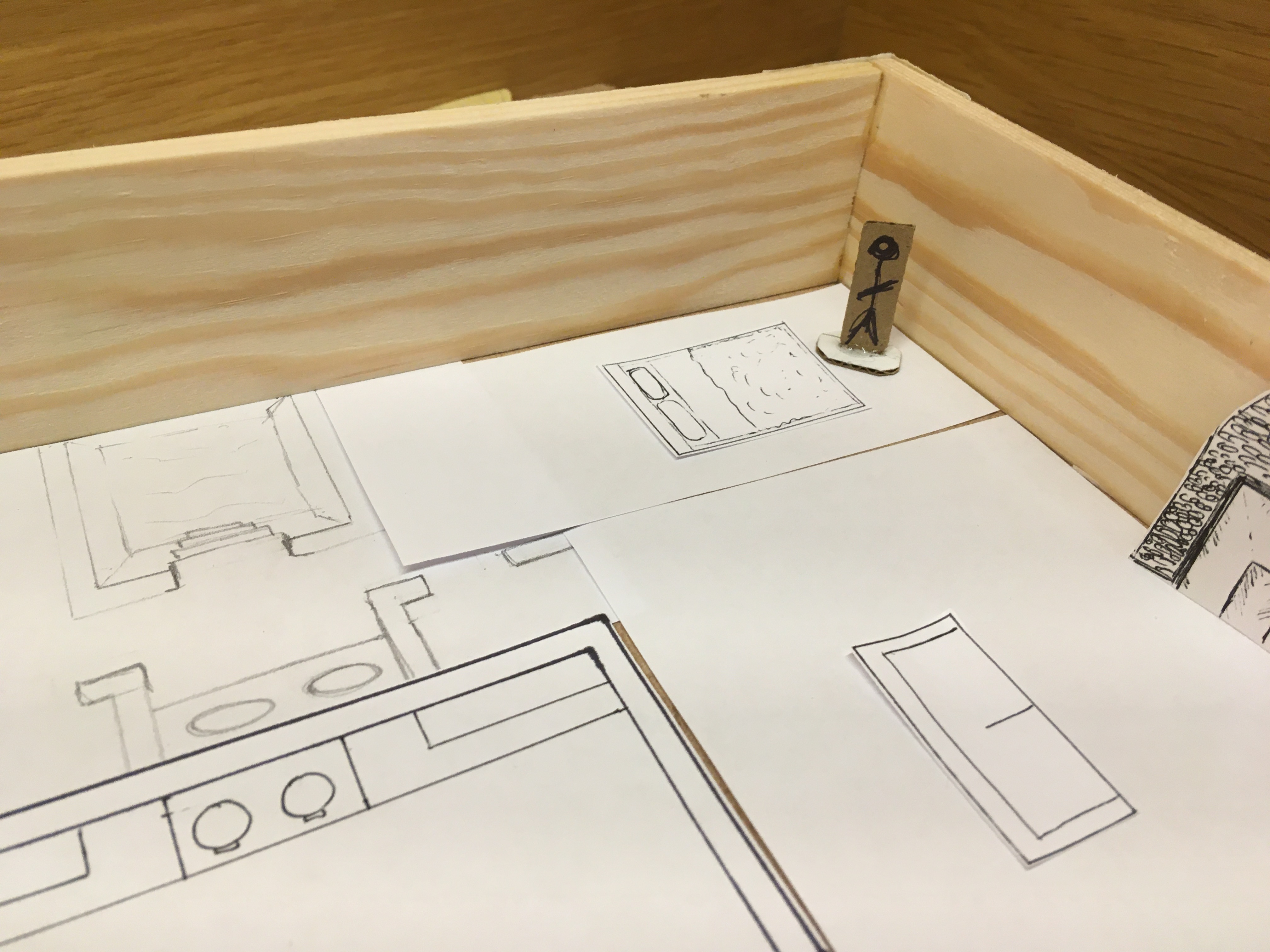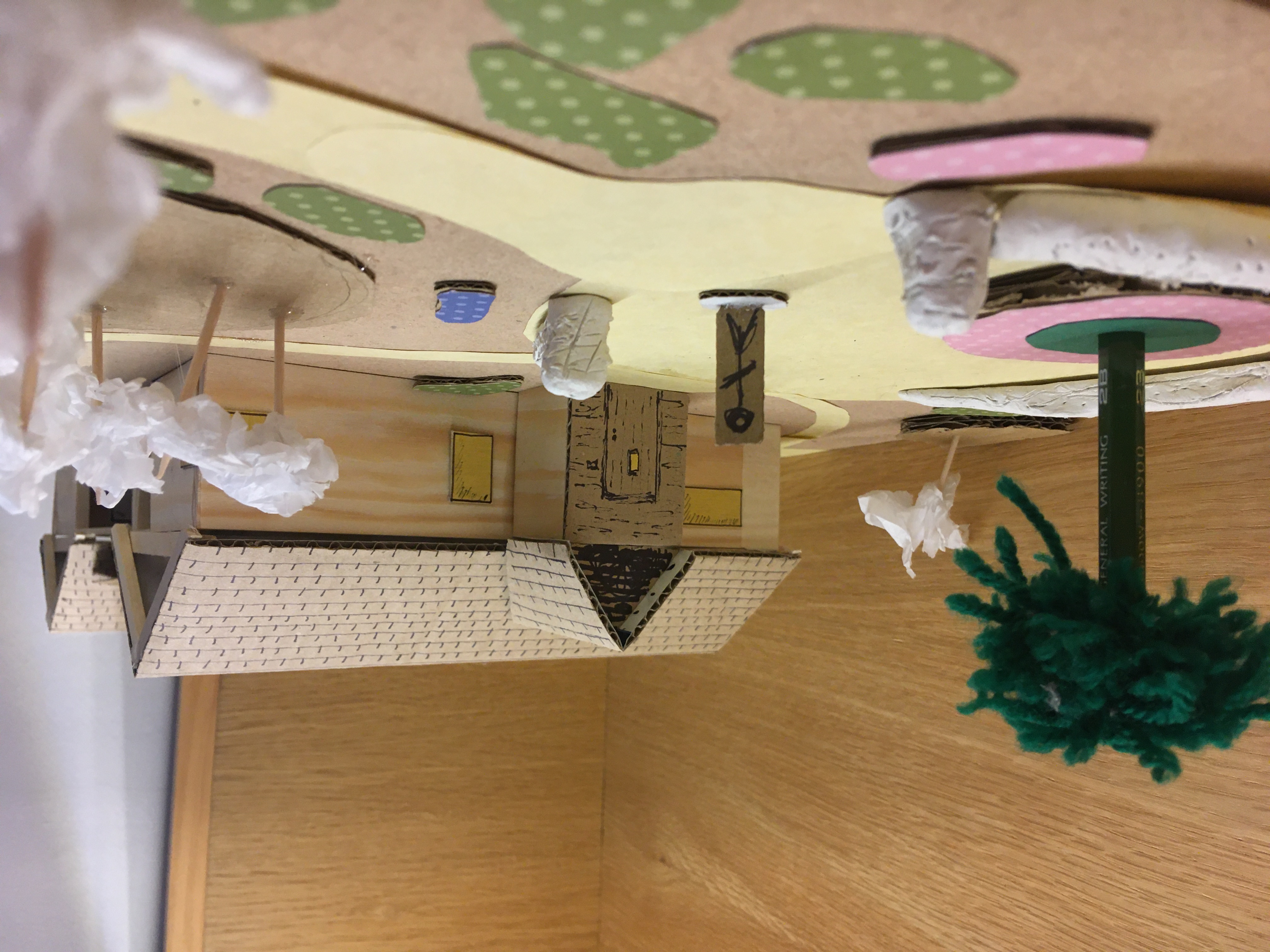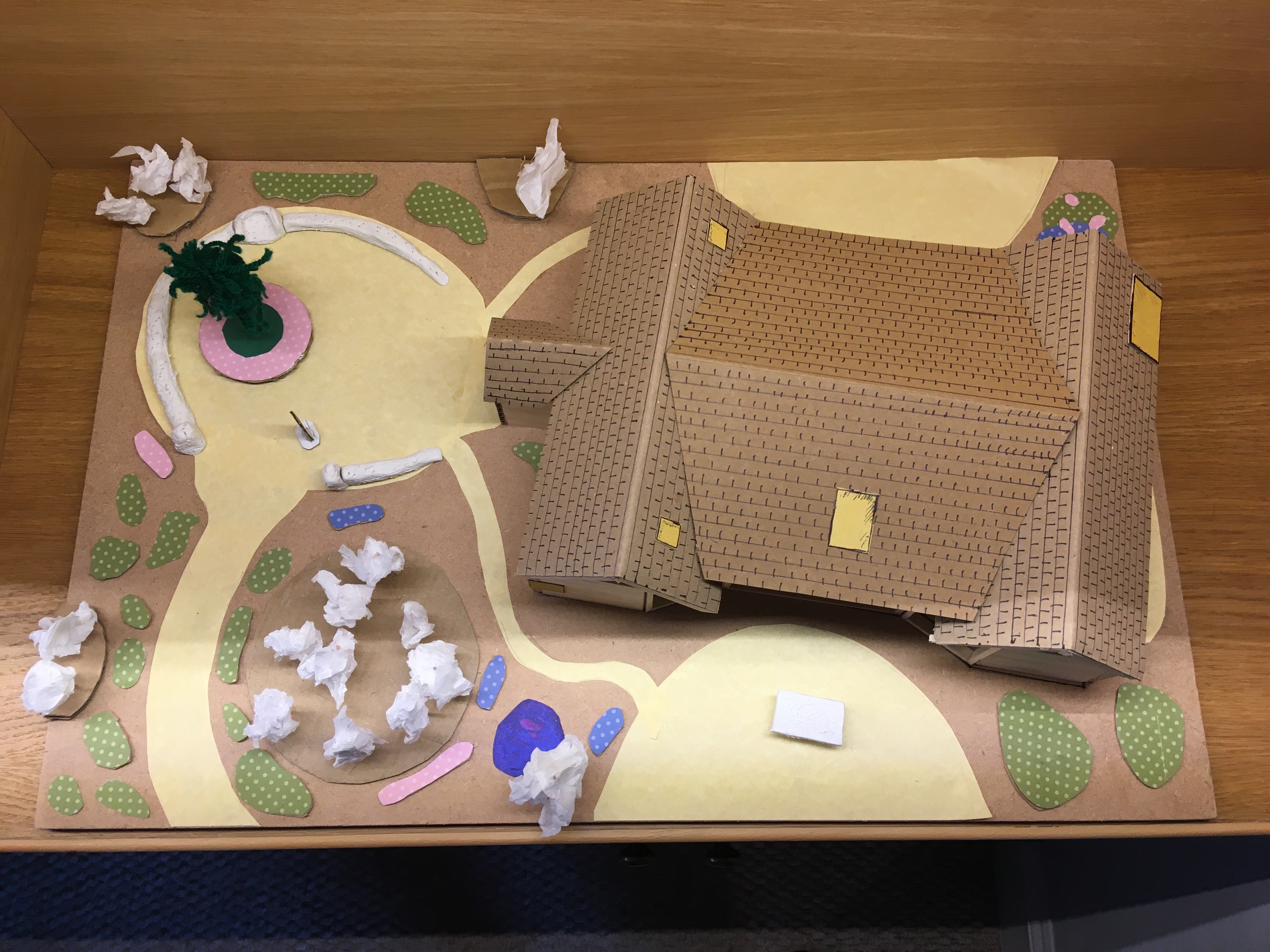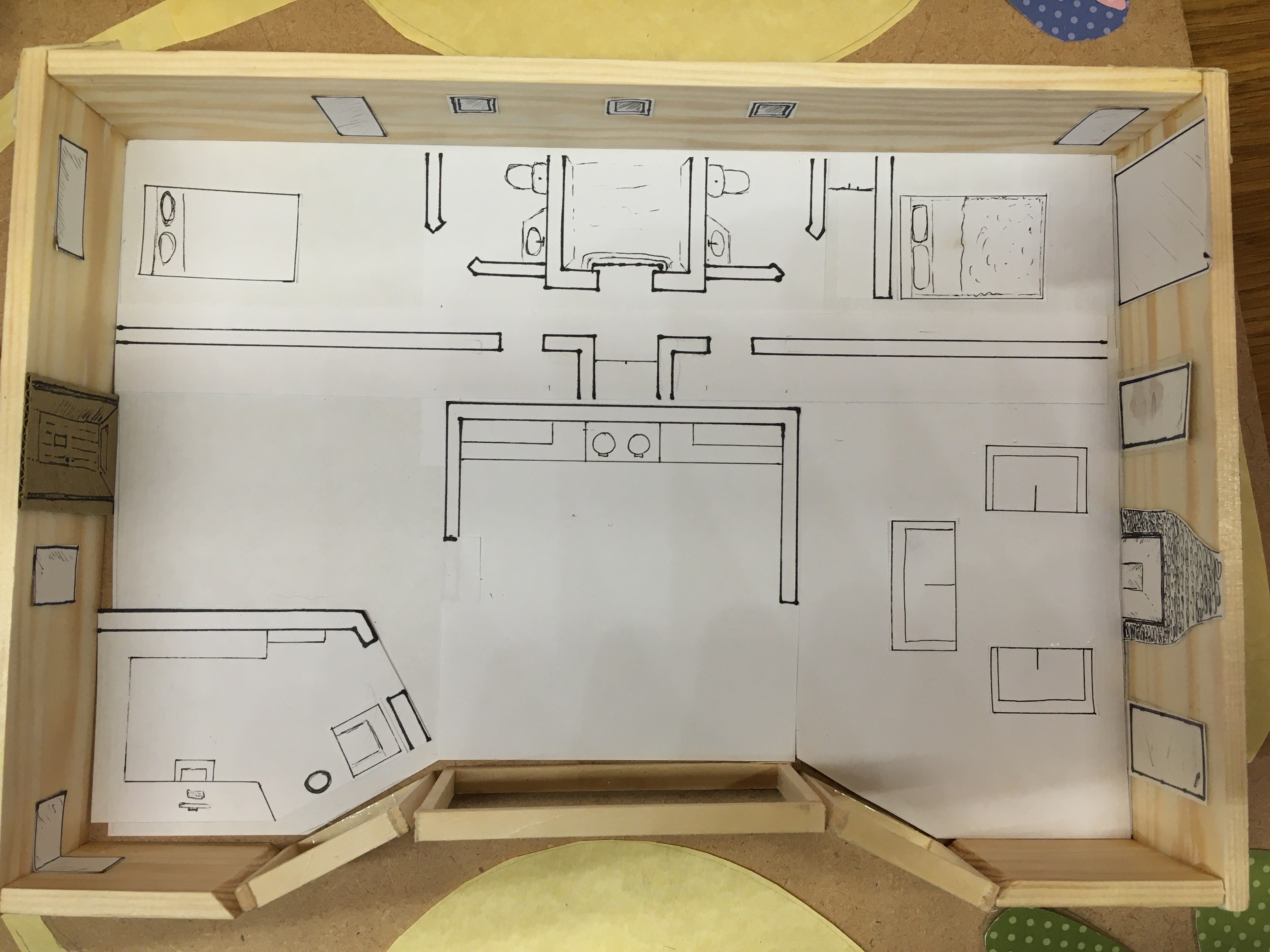Building Beauty: Week 11
I made it! I’ve completed the winter term of Building Beauty.
It’ll take me a while to digest the experience, but one thing that was immediately clear has been the combination of reading the books while applying them to practical projects has been a great experience and feels like it’s accelerated the learning experience.
There’s another 10 weeks or so after the winter break – so not much time for pause – but looking forward to the next books and projects.
Studio
Last week I teased the 1:50 model. Here’s what I made as a starting point and how it relates to the 1:200 model.
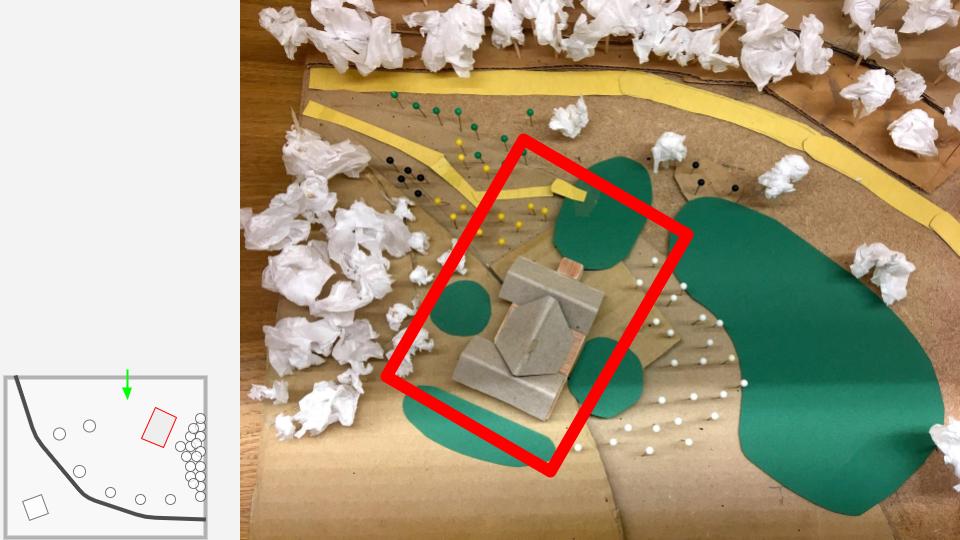
While the garden area was pretty sparse at this stage, adding increasing detail like the tile roof felt pretty exciting as I could really start to get a feel for how the building would come across in reality.
Adding some more detail to the garden started to add a better sense of the space, though the large open area directly in front of the house still felt a bit unresolved.
At this point I started adding some of the key interior rooms. It felt natural that the kitchen open onto the enclosed garden with a table for summer lunches.
I didn’t develop the main living space much as it wasn’t one of my project jewels, but positioning sofas, fireplace and windows helped understand how it relates to the kitchen and the rest of the floor space.
I liked the smaller, less direct views onto the “open views” centre. It would be easy to make the entire wall a huge window to “bring a connection to nature”, but I find that approach doesn’t add much life to the building itself. Smaller framed views entice you to actually go outside and explore instead, and the fireplace acts as a comforting centre at night.
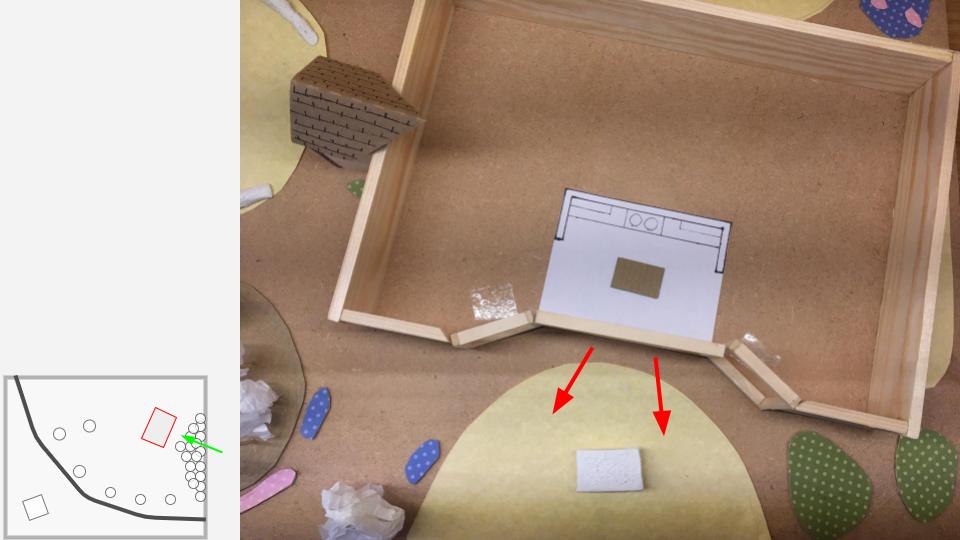
The office came next. I opted for the corner facing the side path since I could imagine the greenery being most vibrant there. I also felt the side of the house facing the open views would benefit a main living space and main bedroom more than the feeling I was going for in the office.
I added the bathroom behind the kitchen since it wouldn’t need any particularly strong views. The rear wall of the house would look onto the pylon, so this positioning reduced the impact of it on the interior.
The remaining space left after the main living room was a good place for the main bedroom, since it could make use of the open views for its panoramic window, and backs onto the bathroom for convenience.
With the main jewels placed, I returned to the garden to enhance how it and the interior interact. I could add windows to the exterior modelling the yellow glow that you’d experience when approaching the house on gloomy days, and also enhance the flow from nature, into the house, and back to nature as you’re directed to the large glass doors onto the enclosed garden.
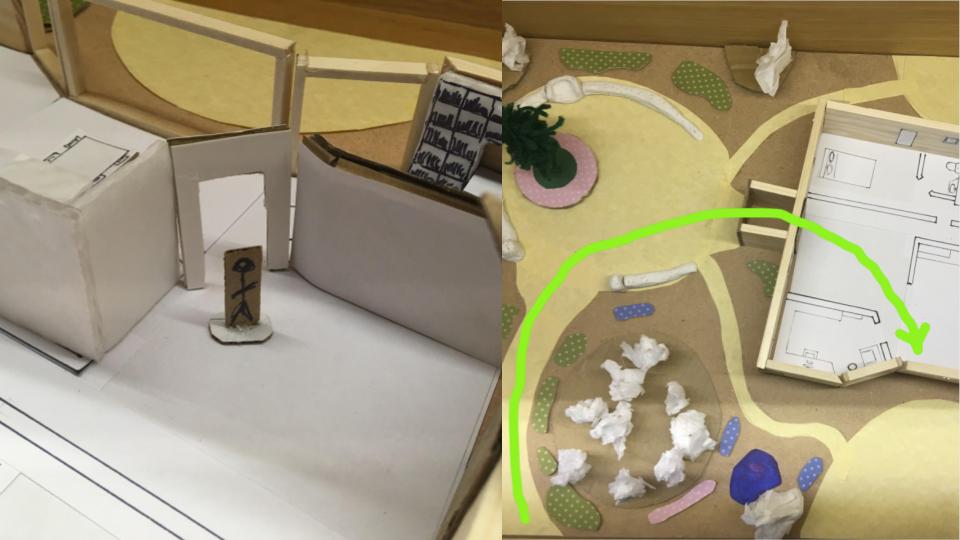
The final steps that I had time for were to add more 3D elements to the interior to get as close to the feeling of the jewels as I could.
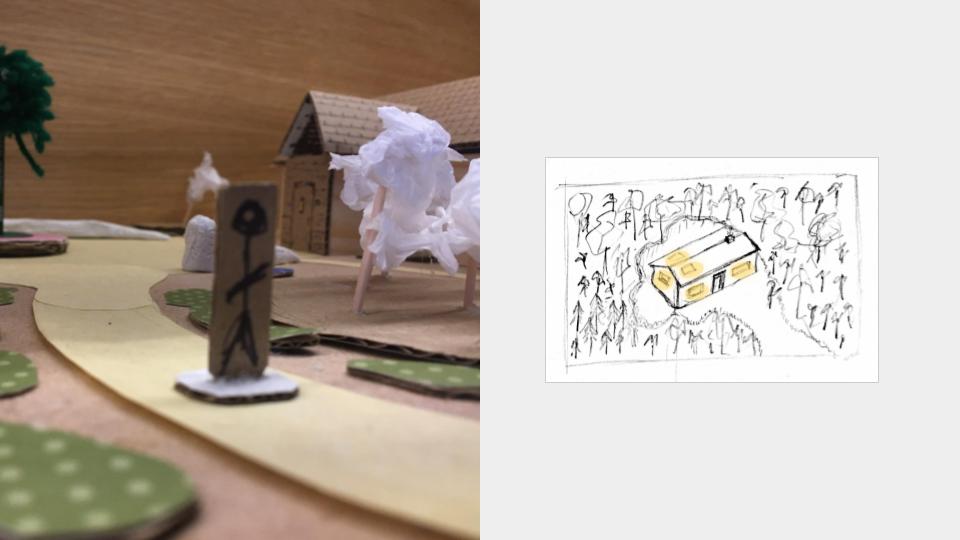
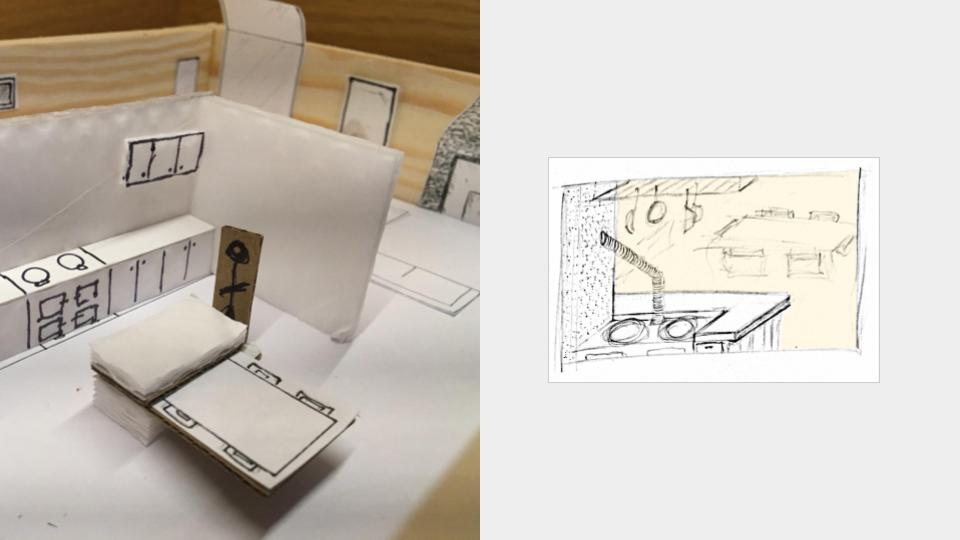
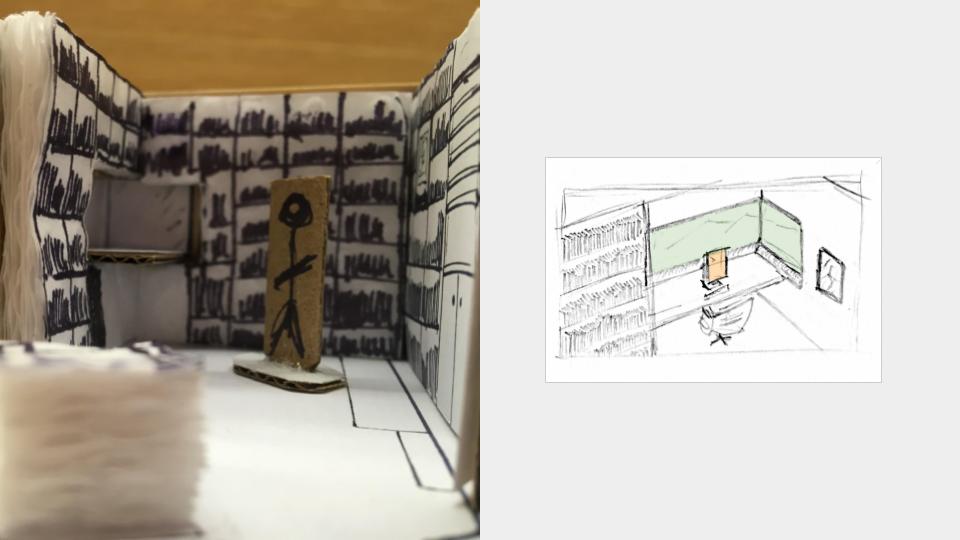
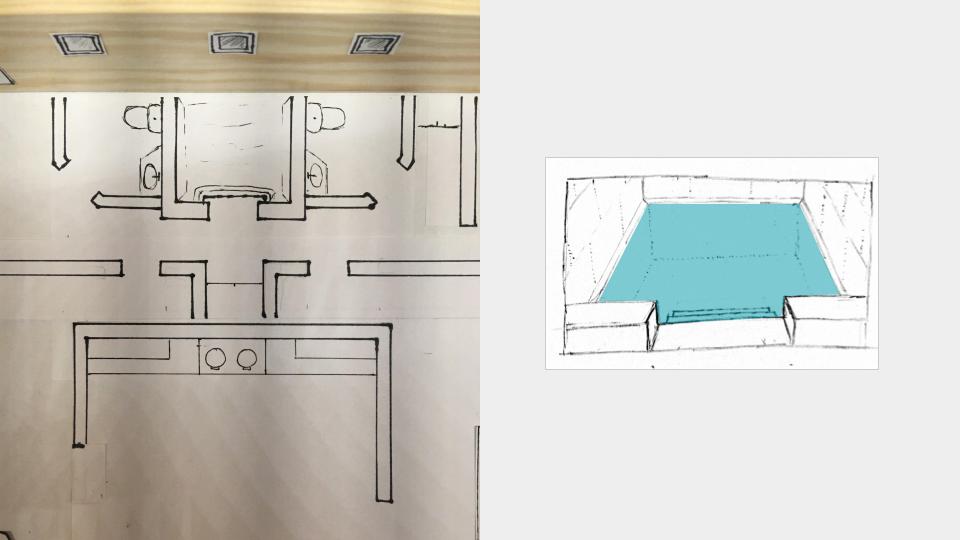
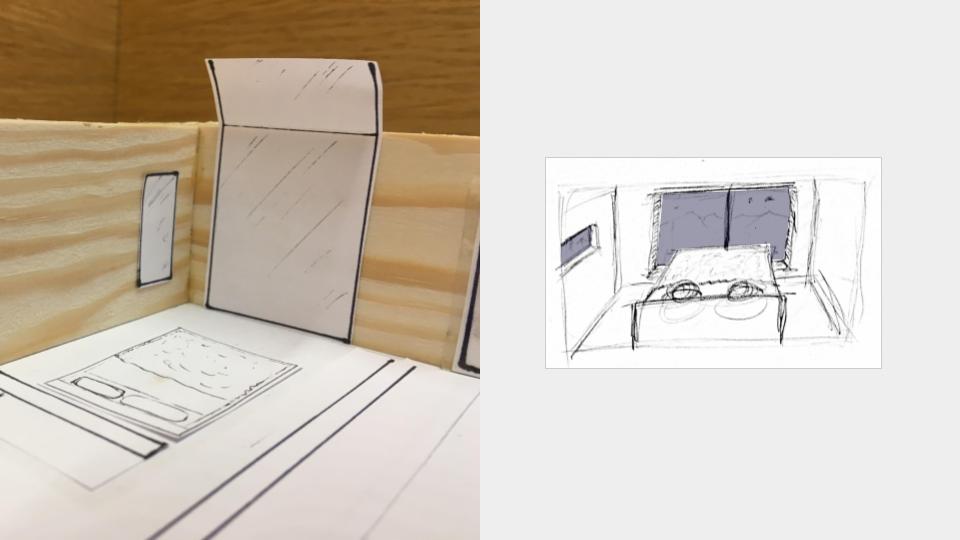
While easier to make on a practical level compared to the ornament and furniture, the house project was quite a leap in complexity. I found the transformation at each stage from the early jewels to the final model quite fascinating, and while the general feeling of what the house should be was held throughout the project, the final form was completely unexpected.
It surprises me that this isn’t how architects usually build houses.
A House for Yourself Presentation
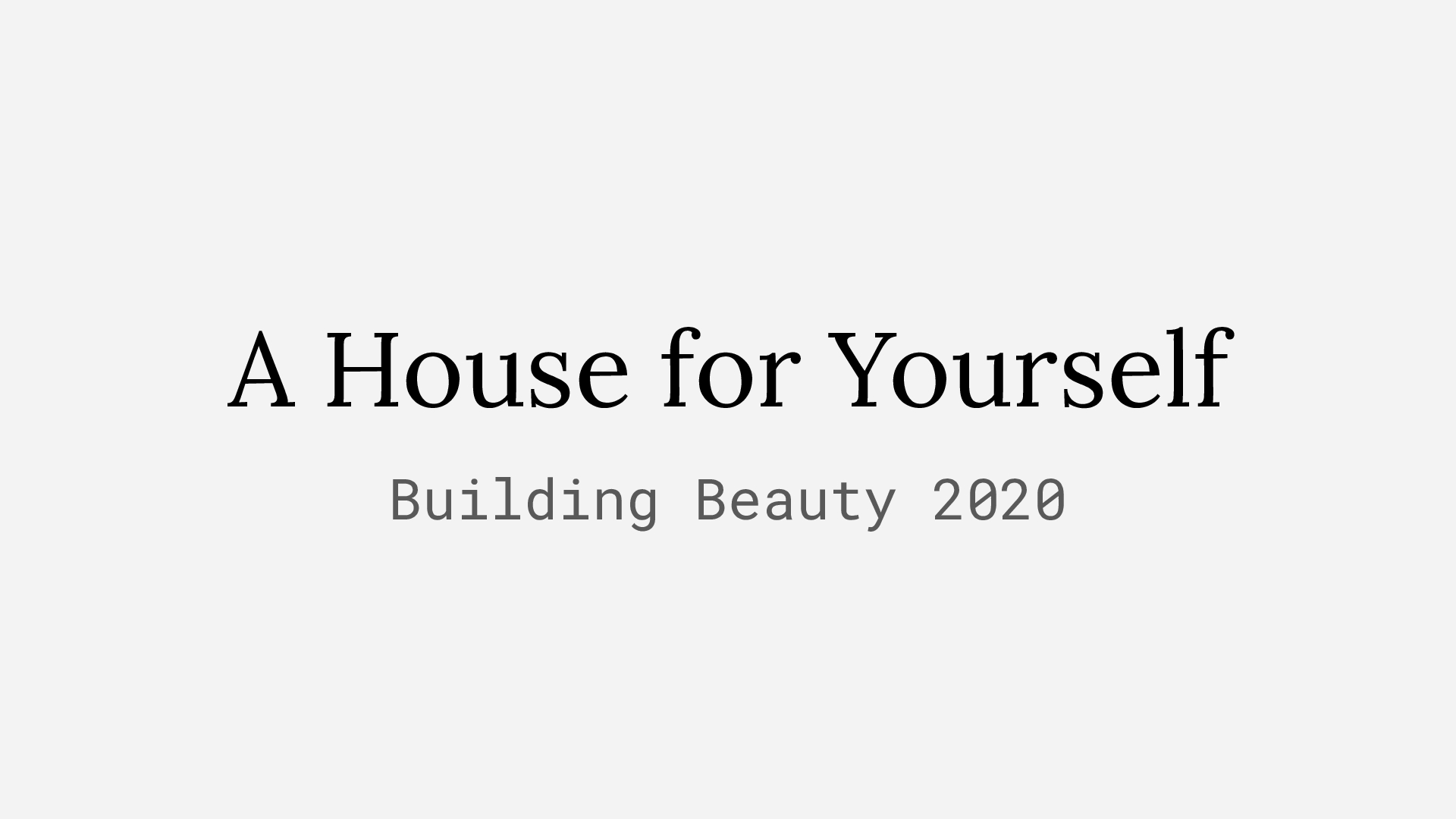
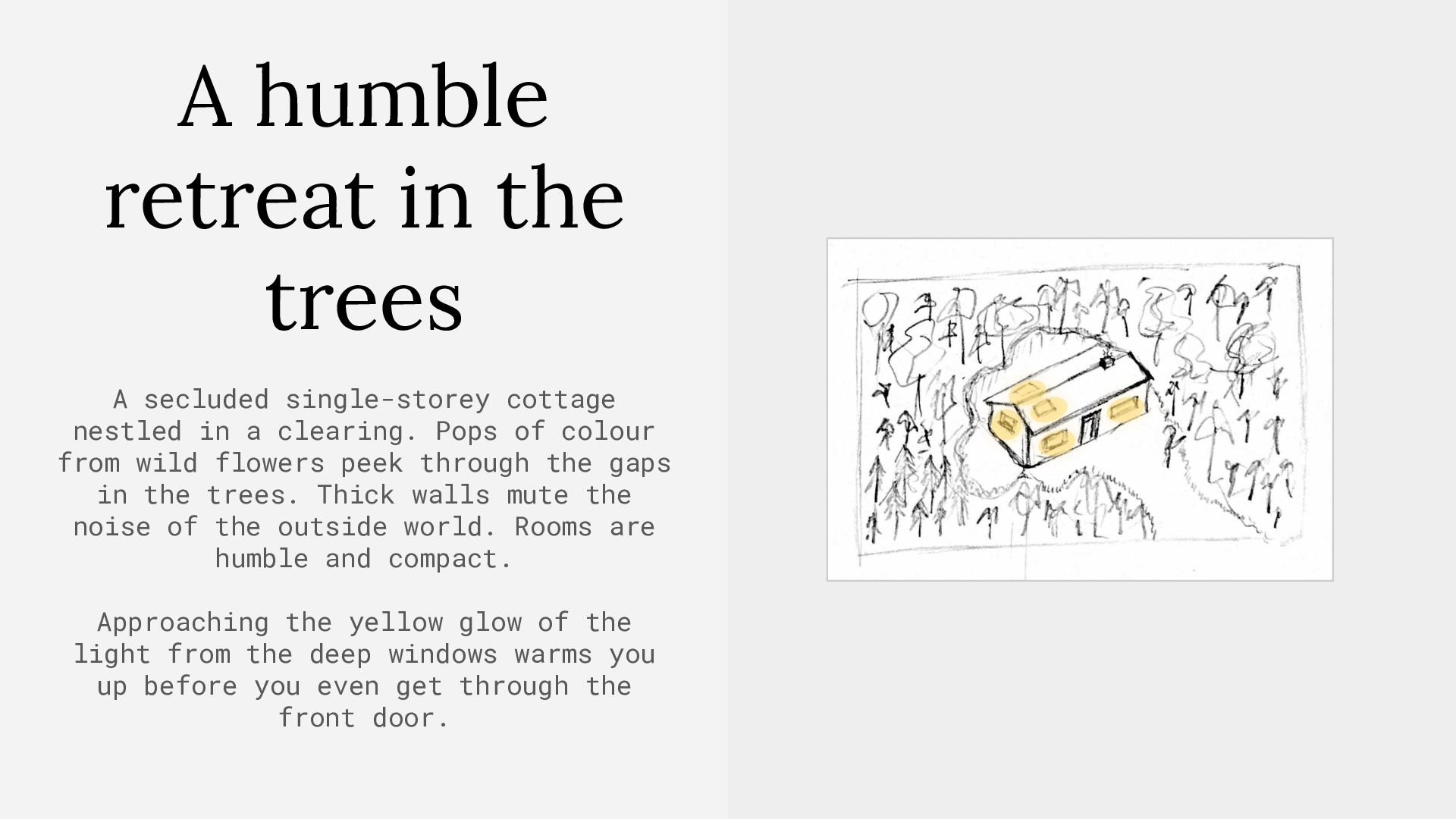
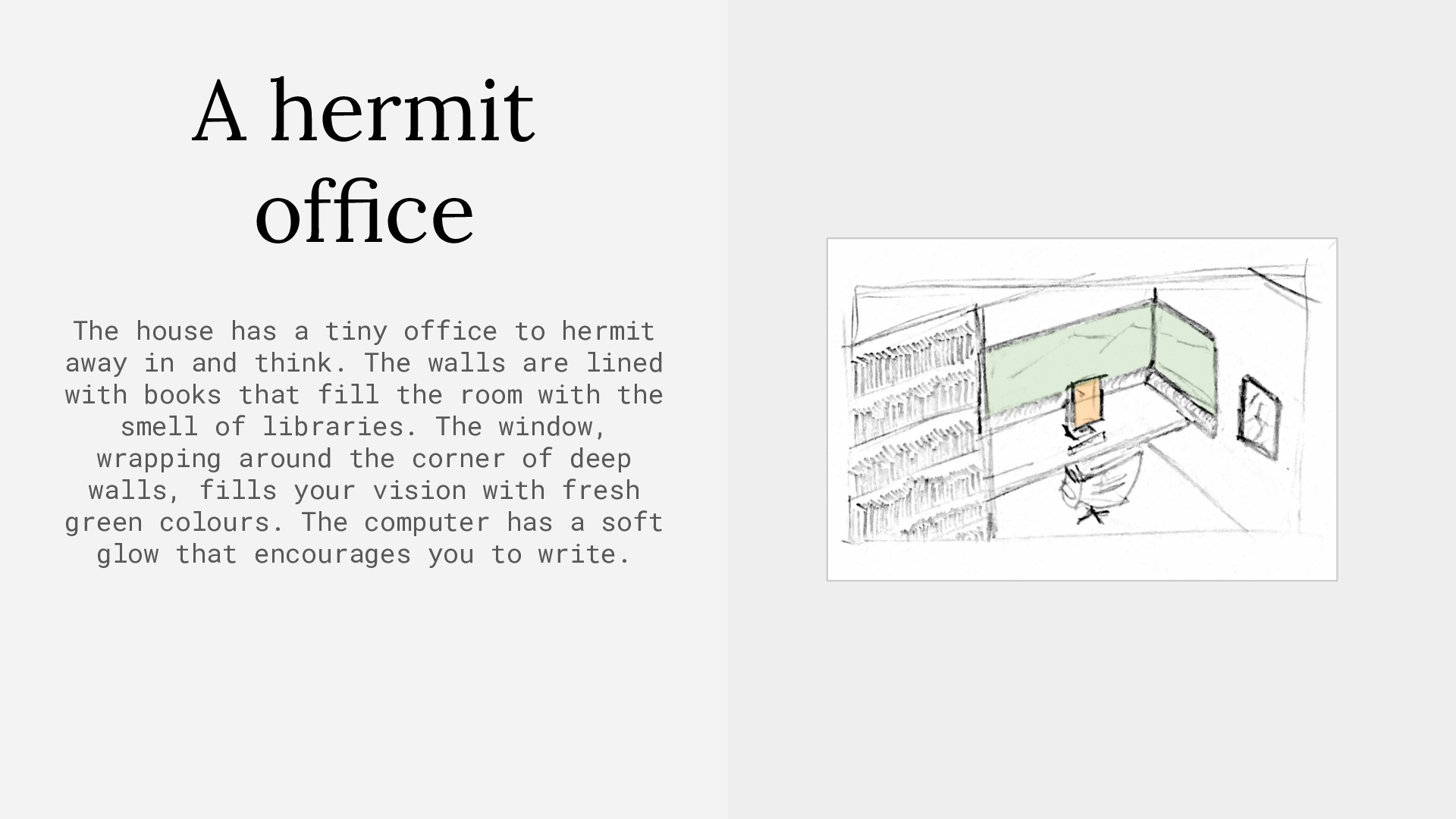
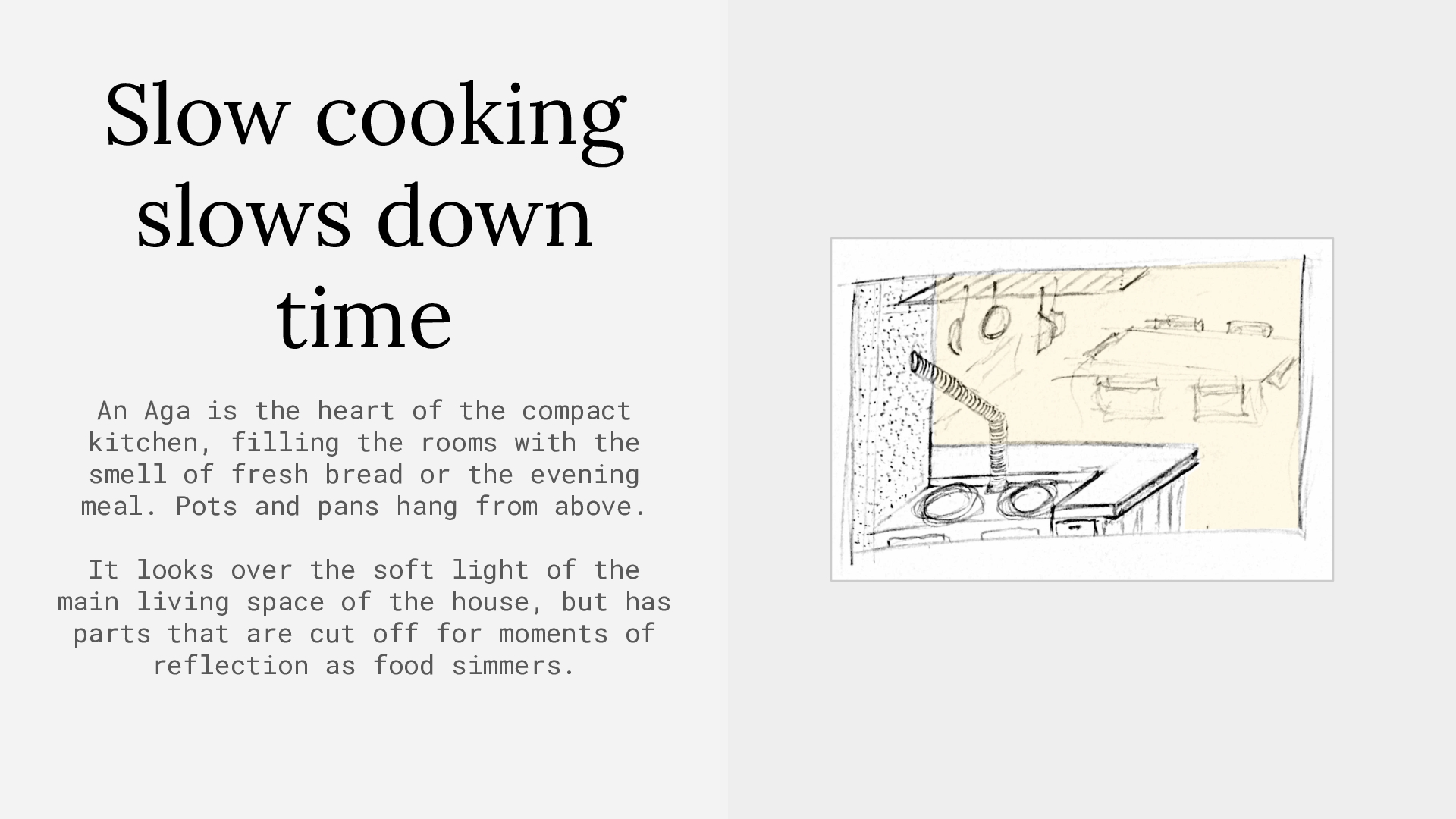
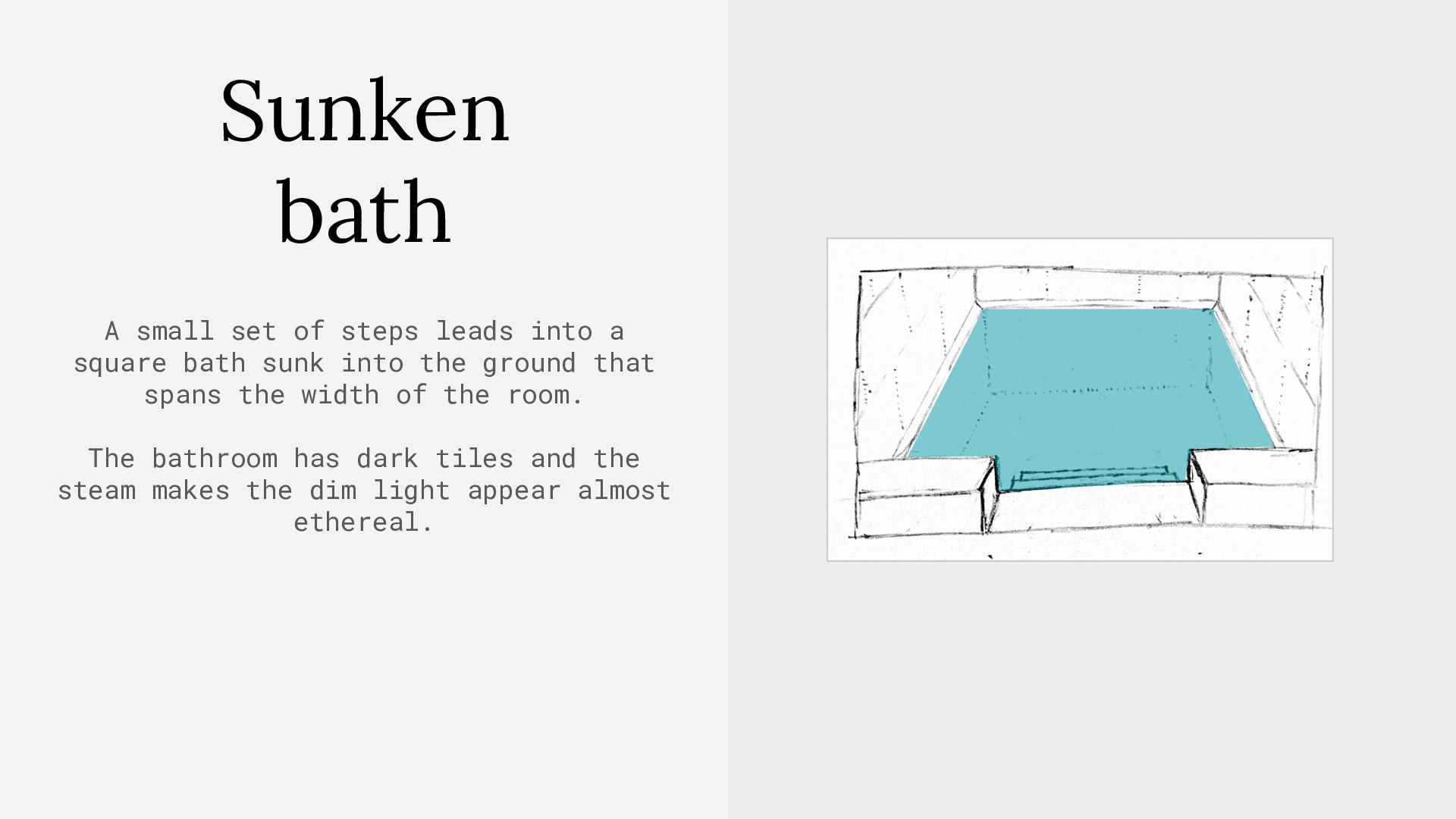
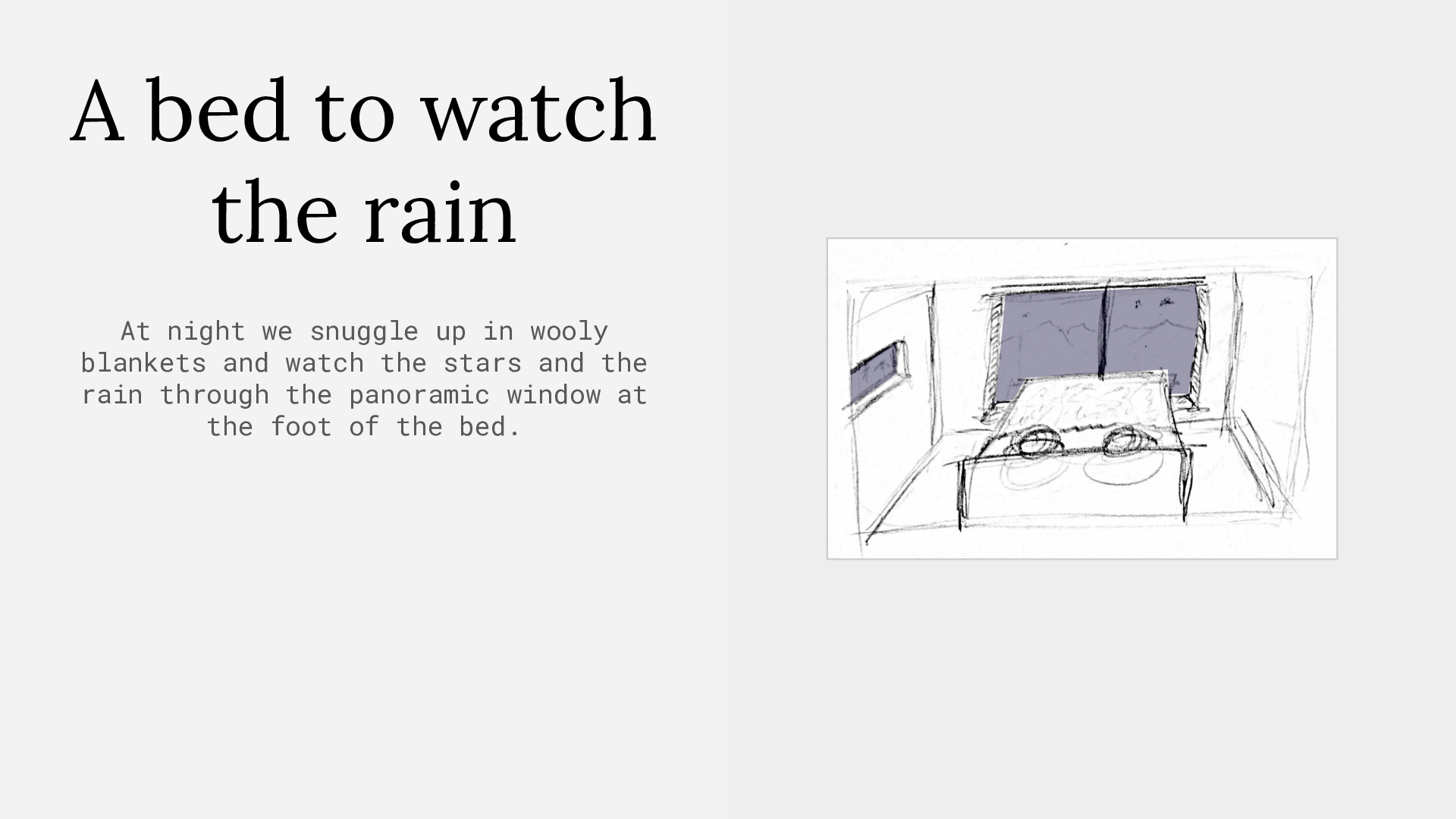
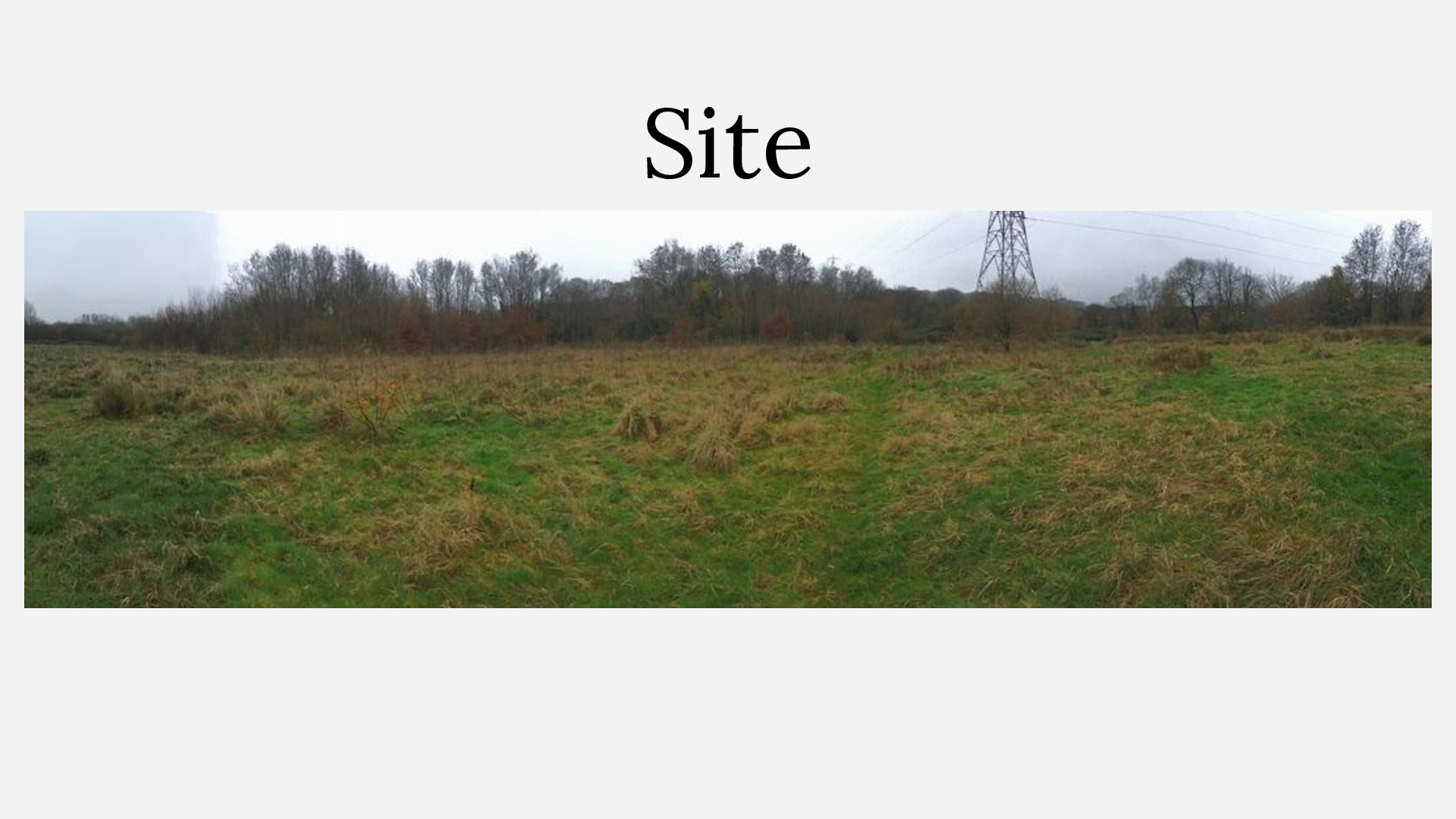
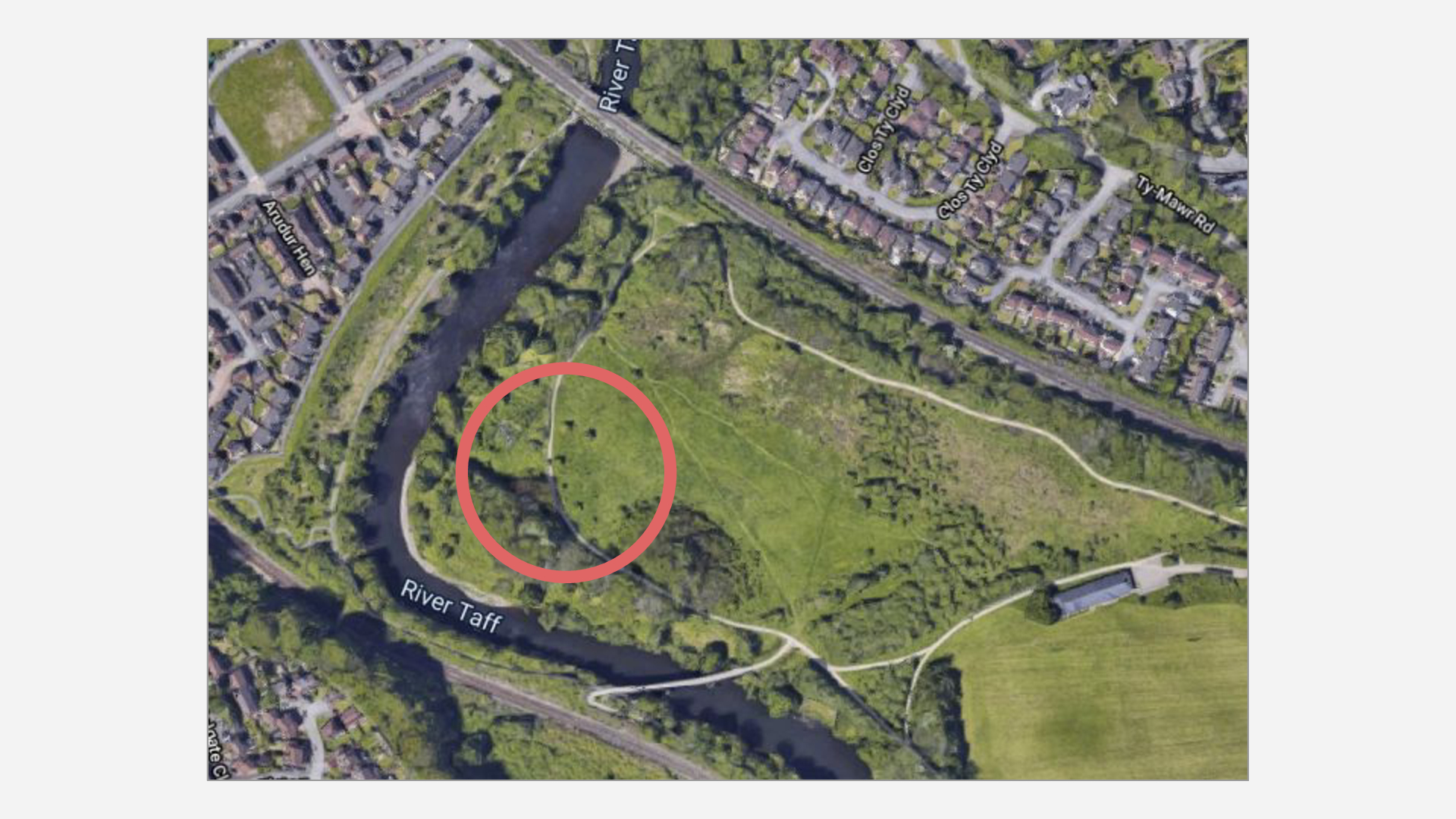
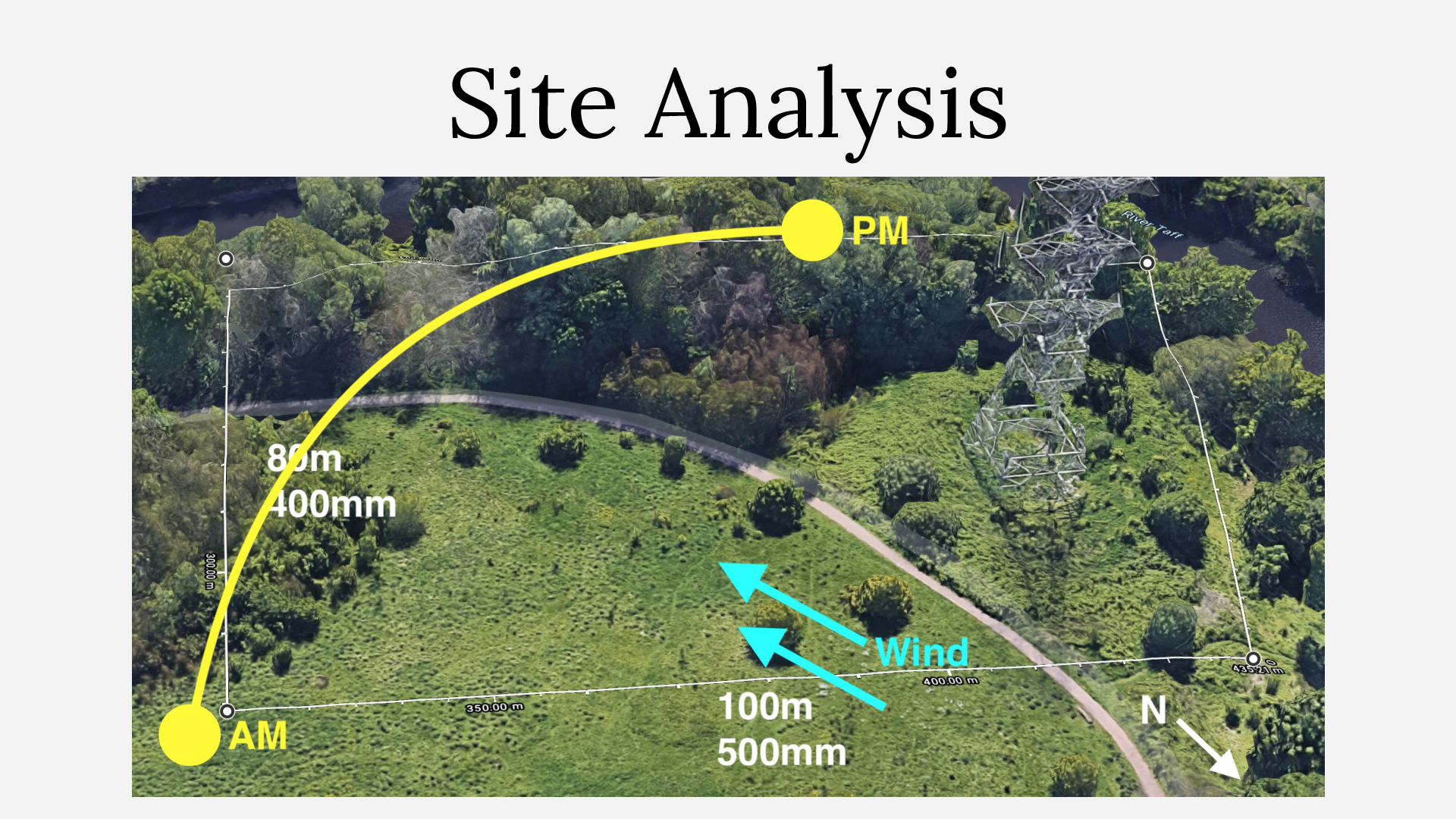
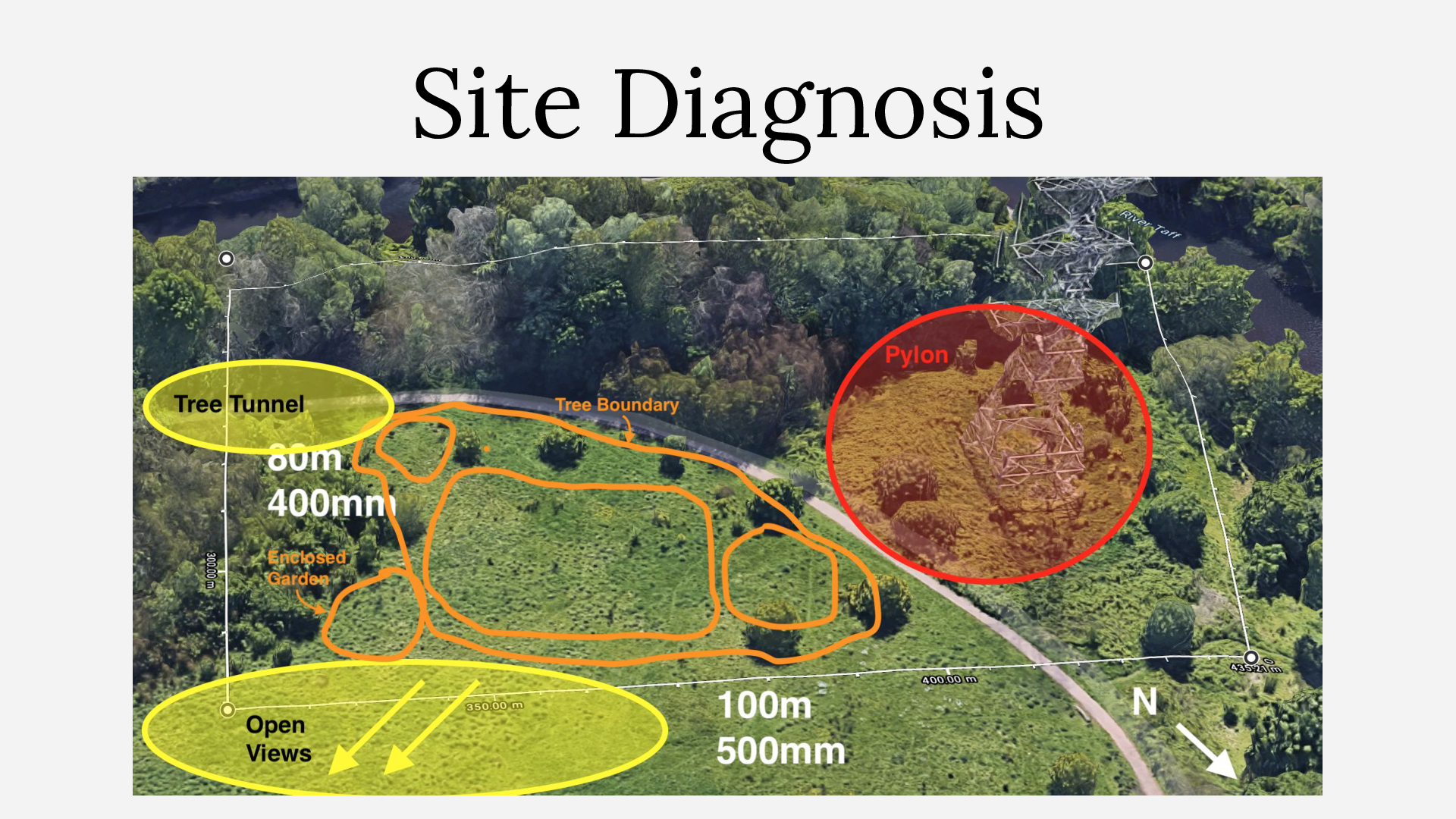
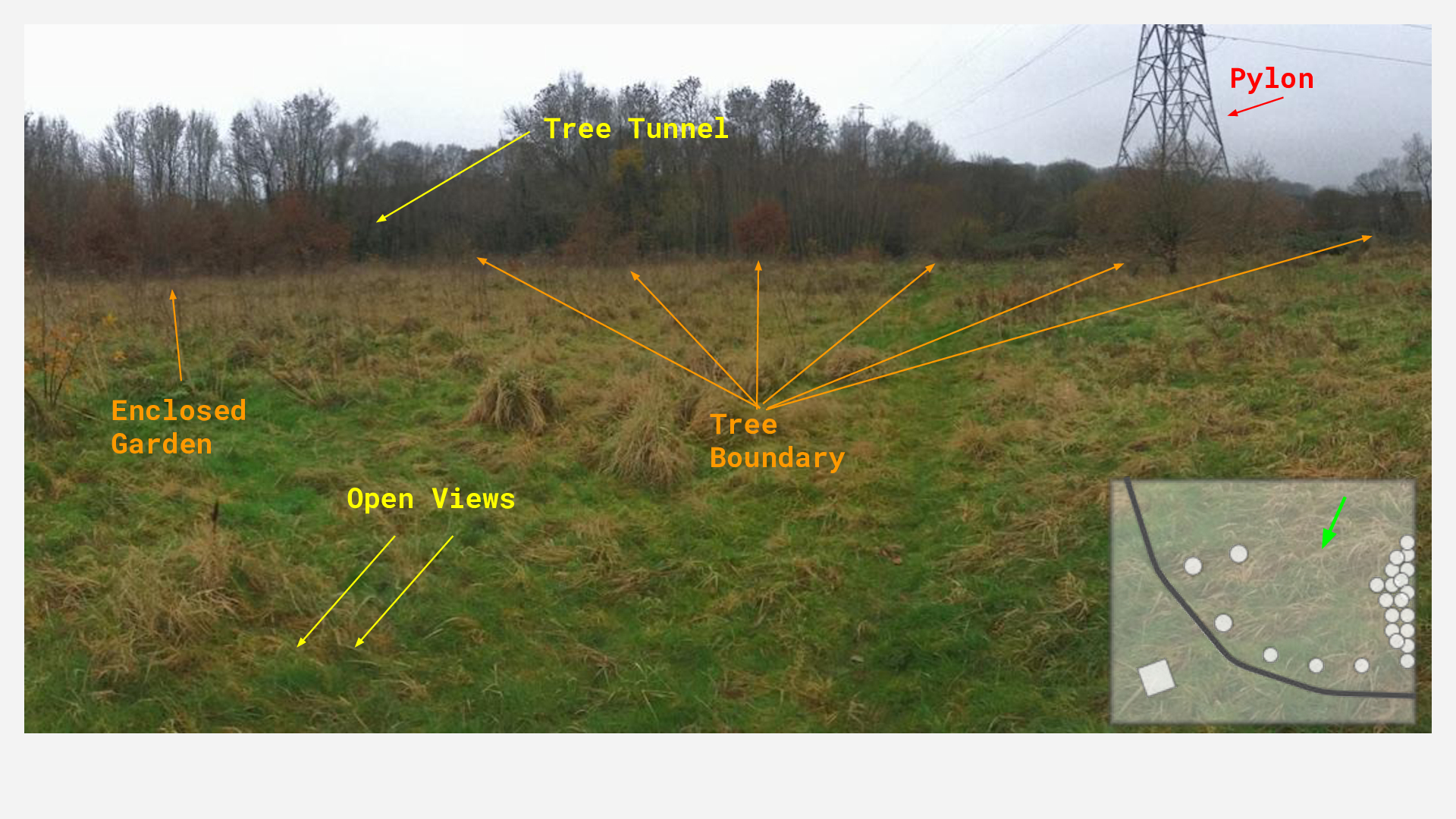
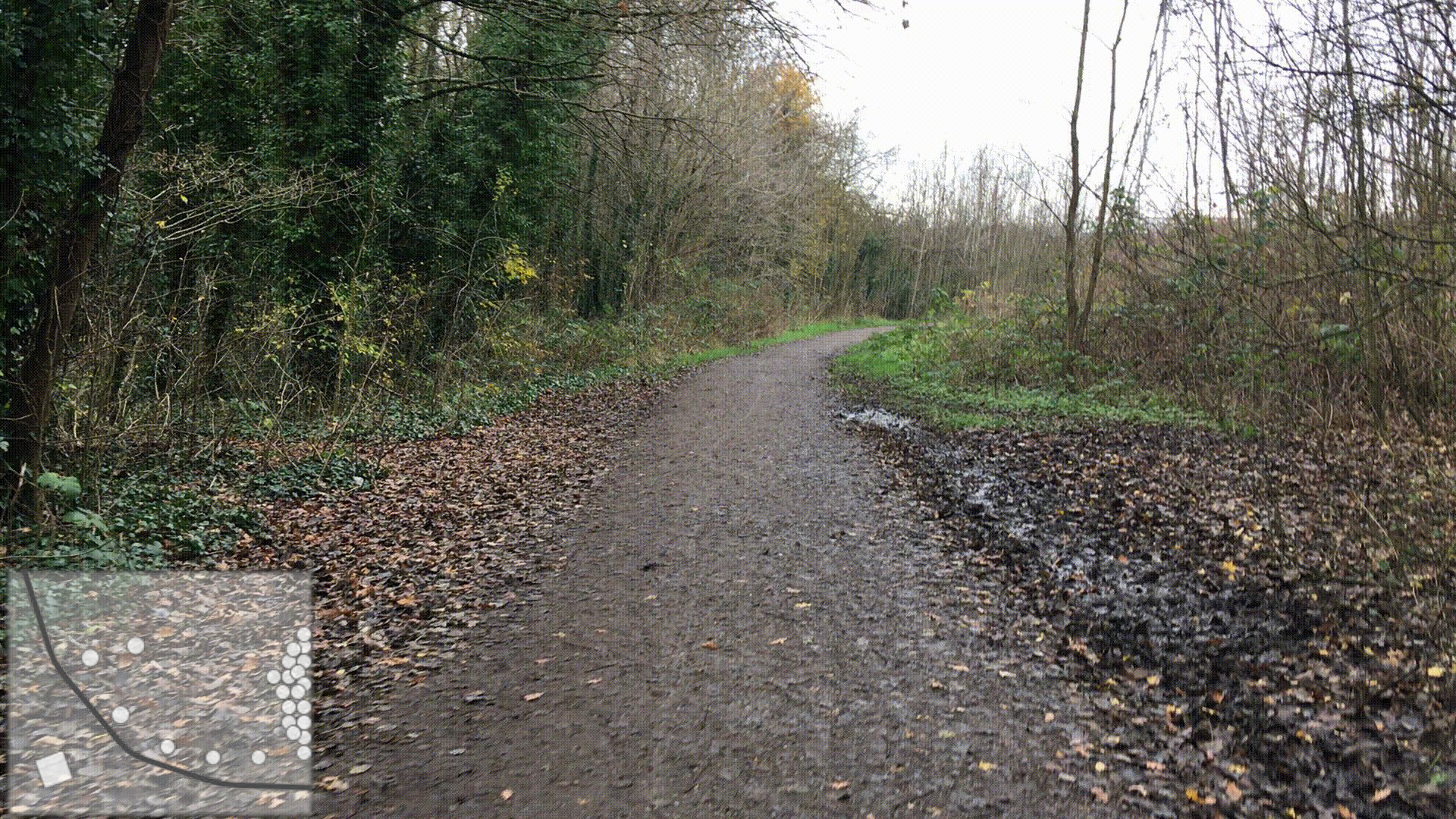
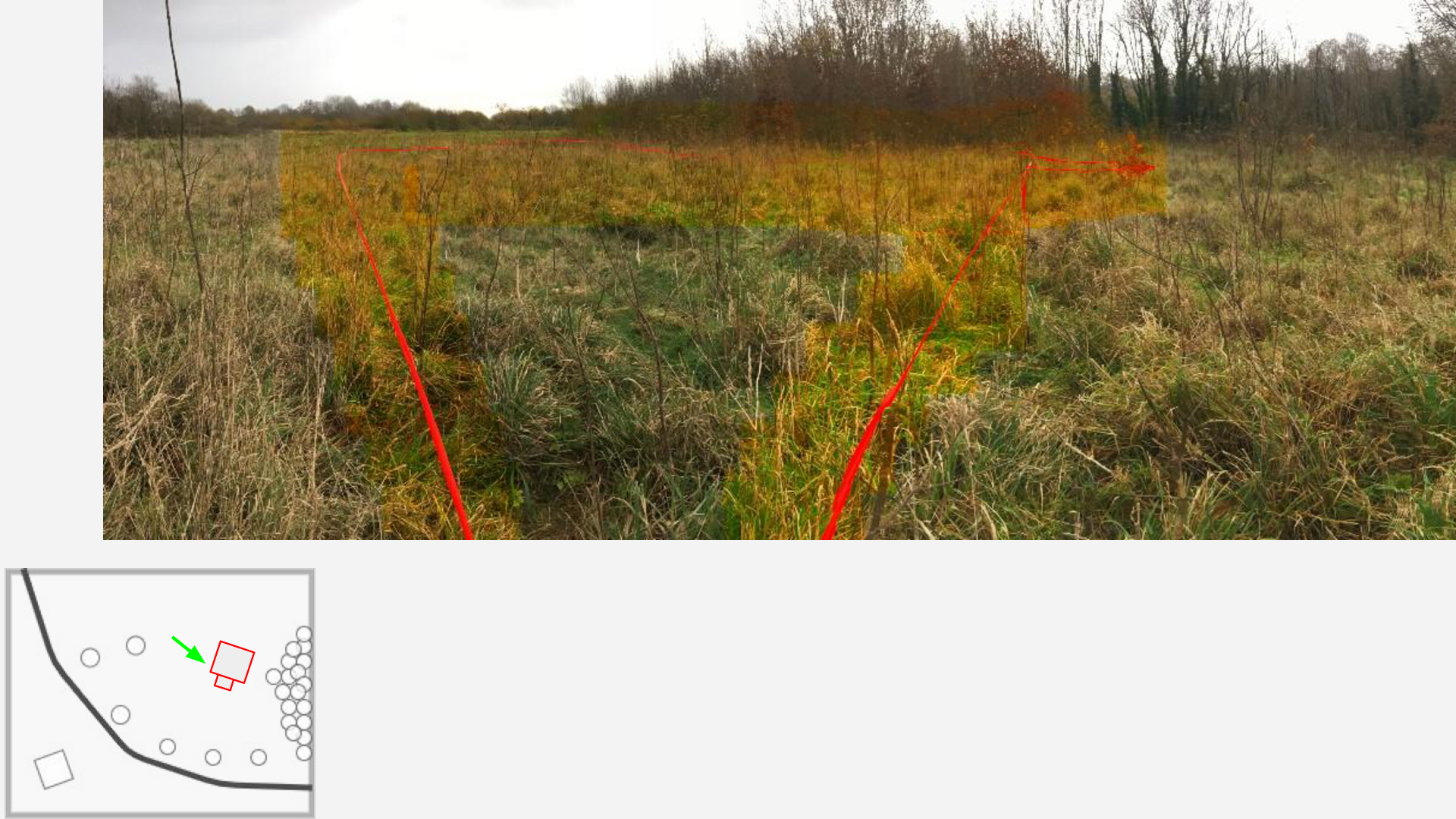
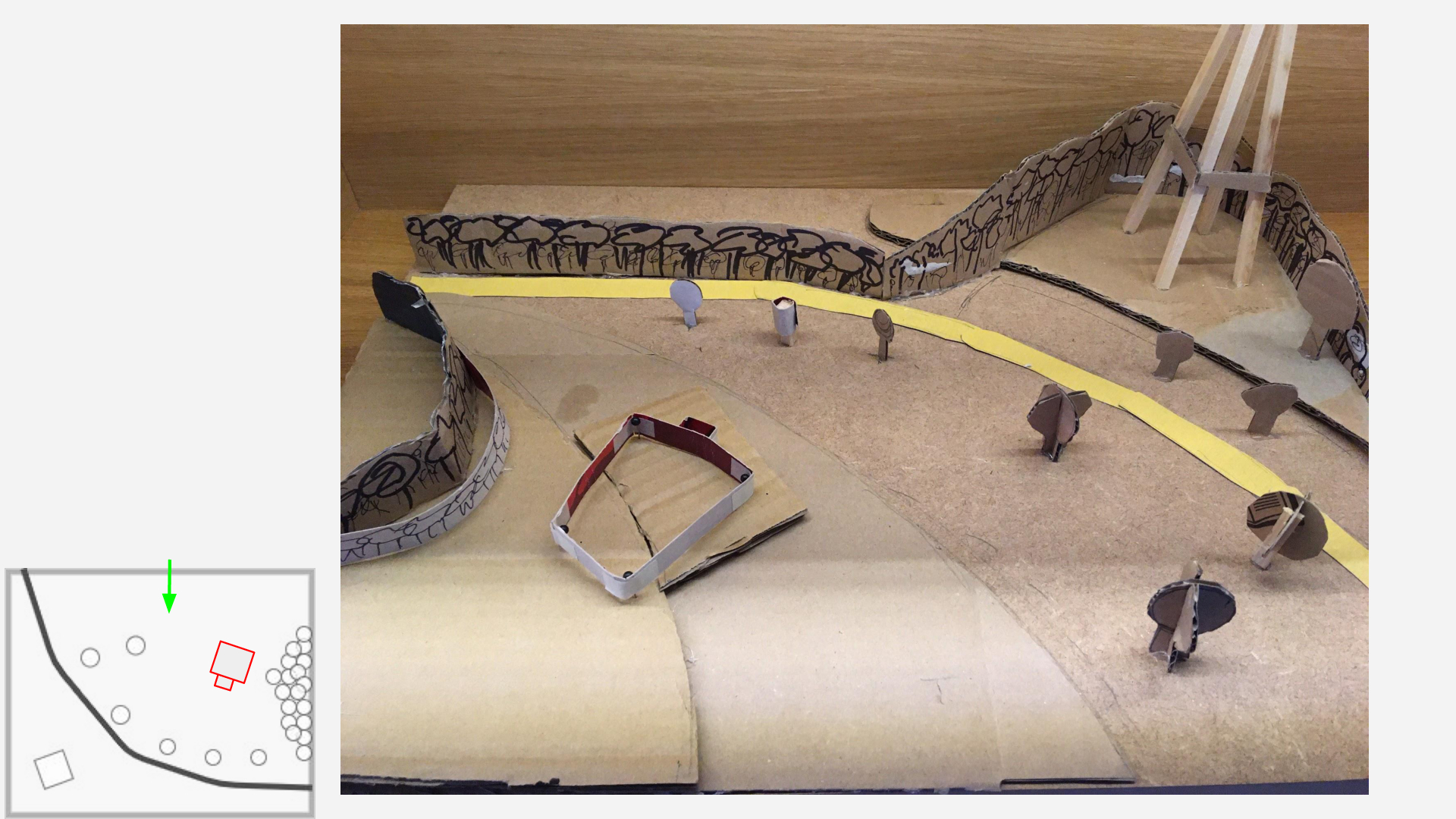
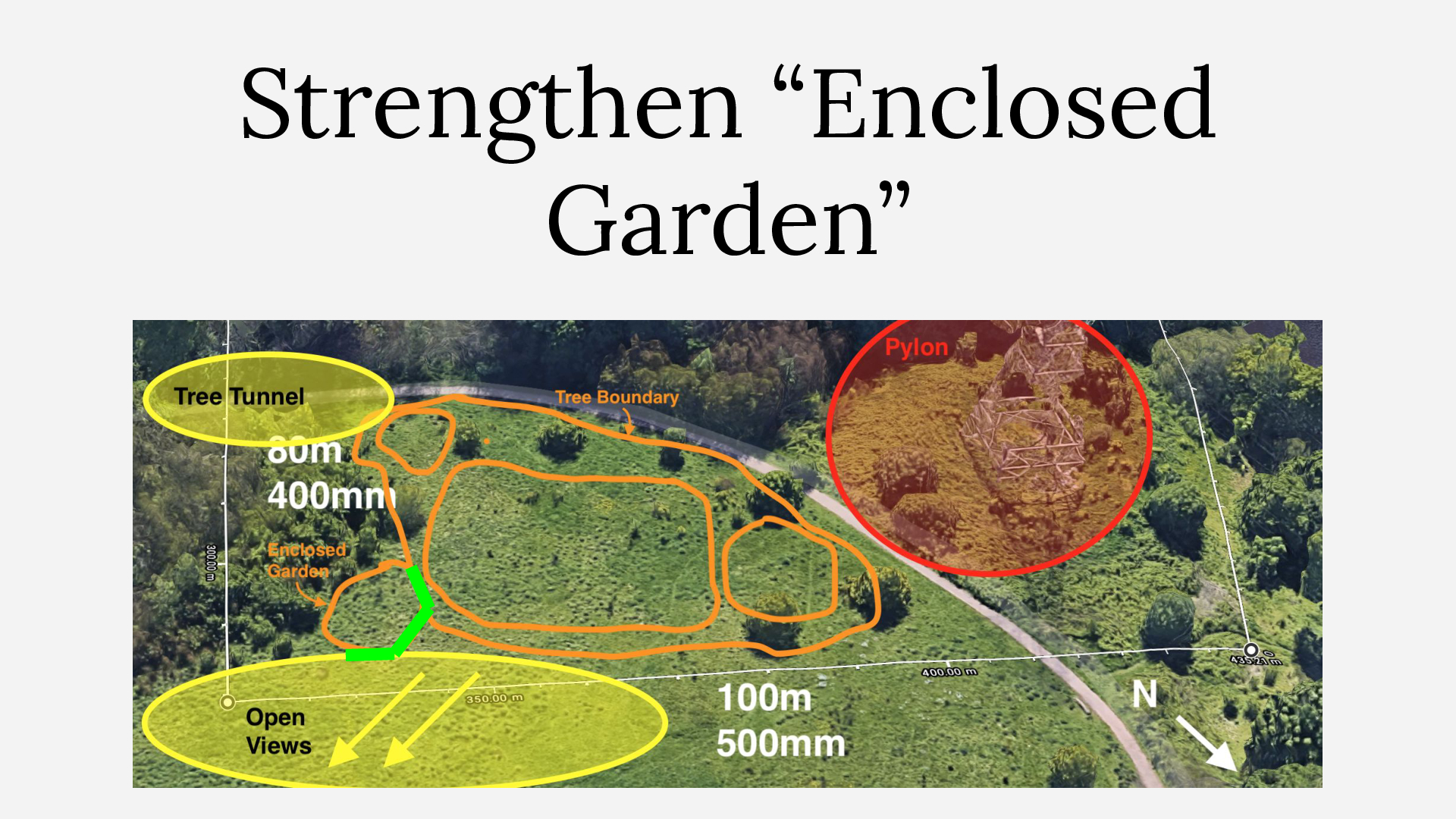
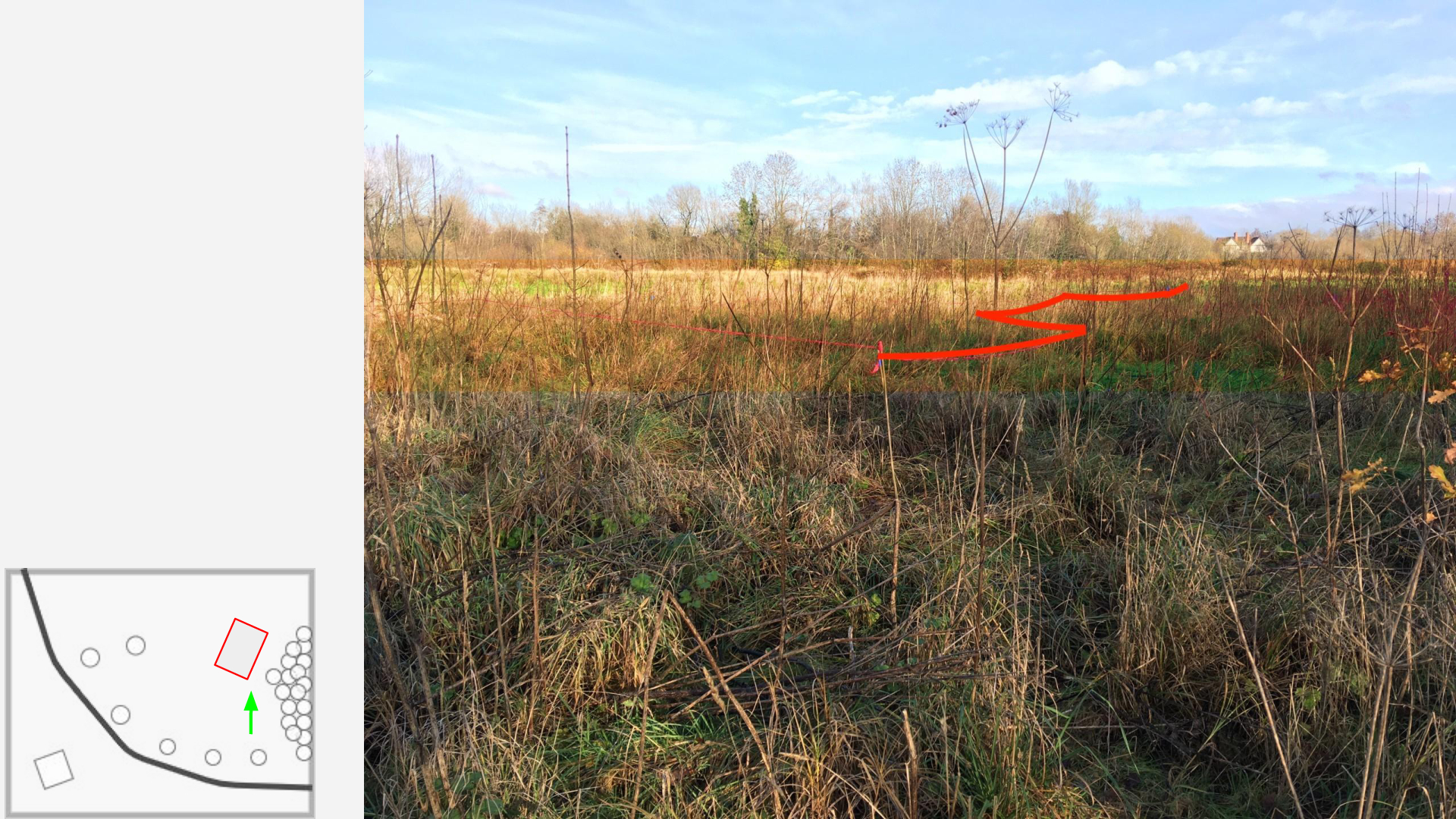
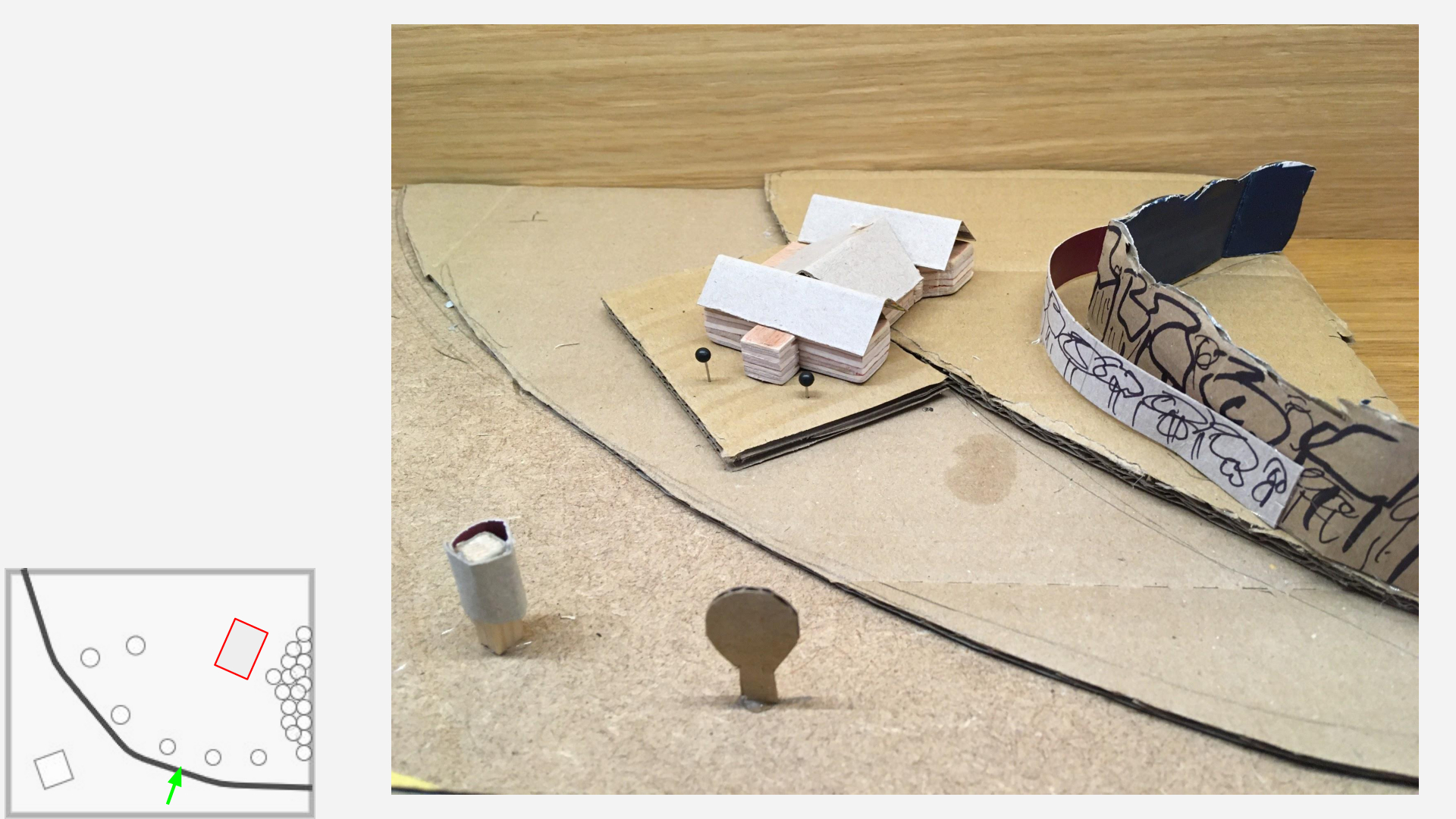
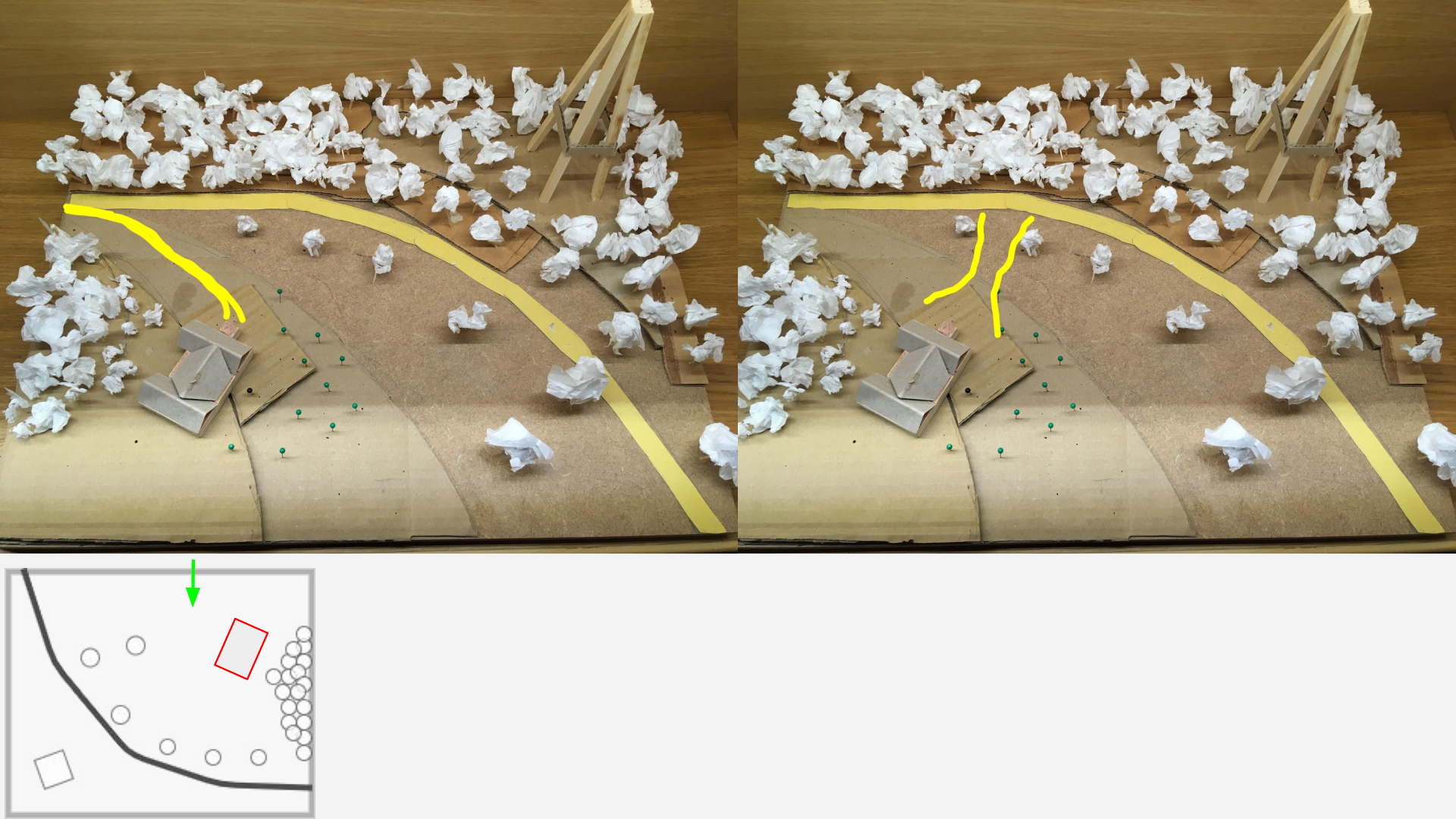
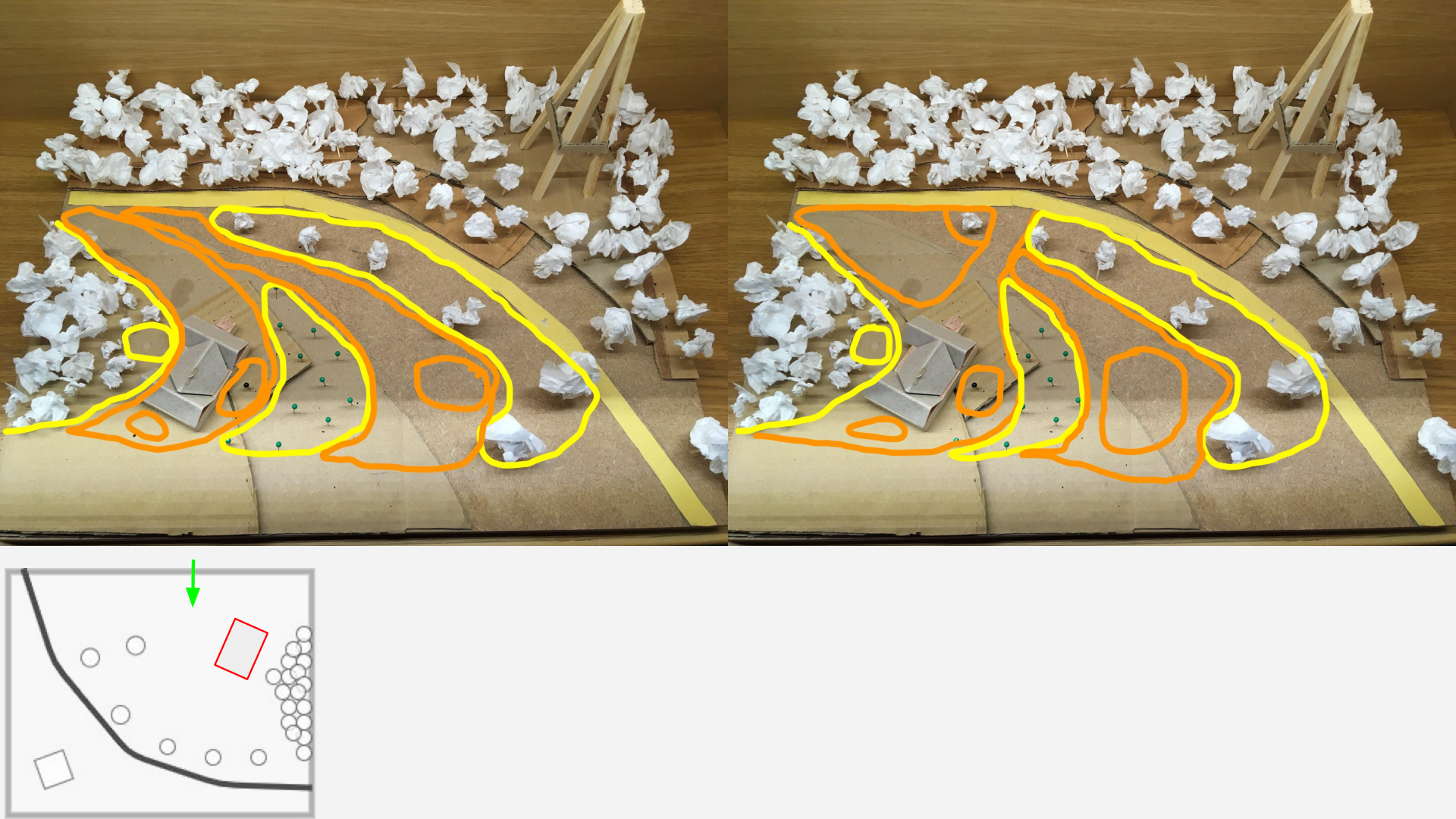
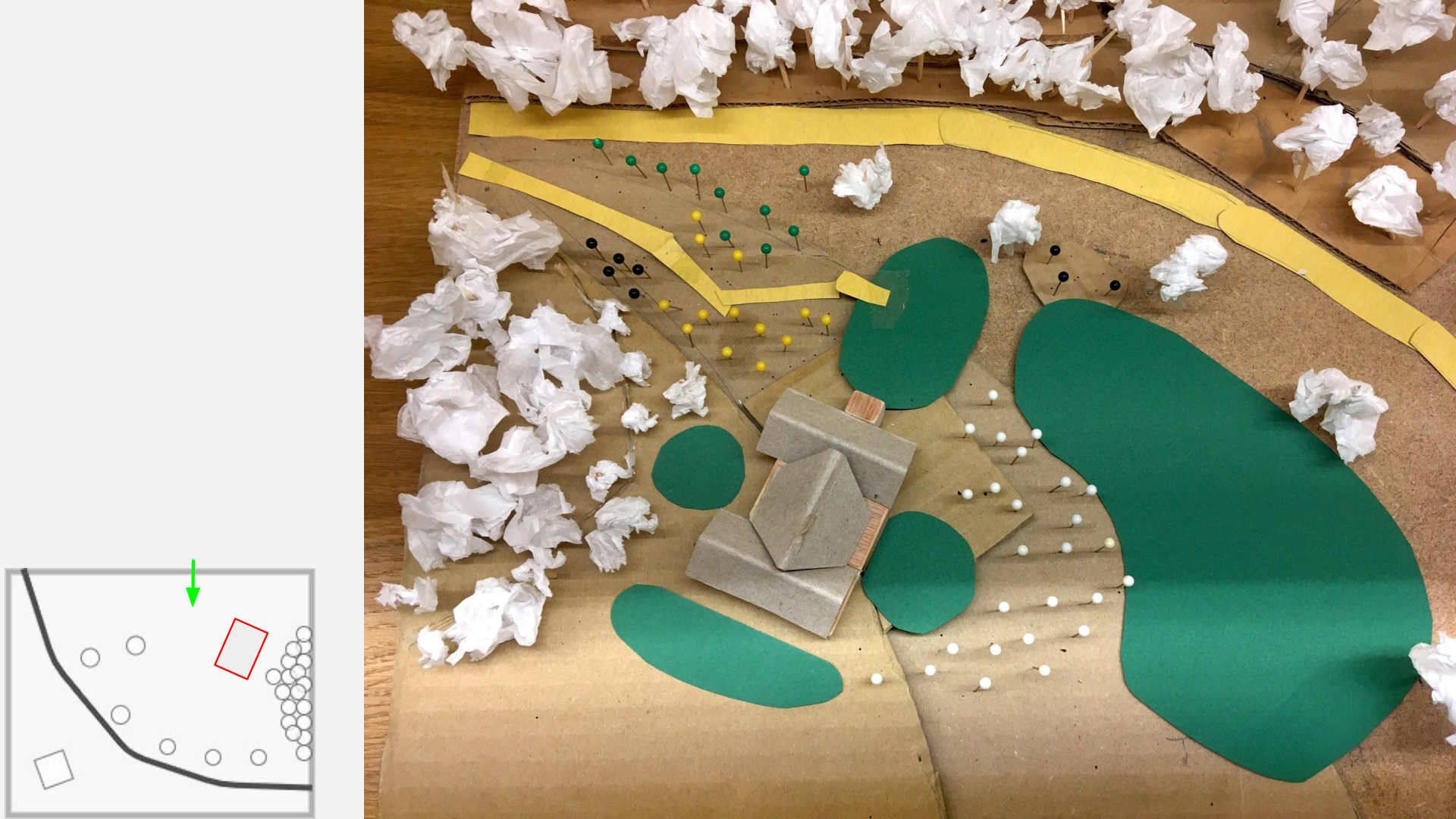
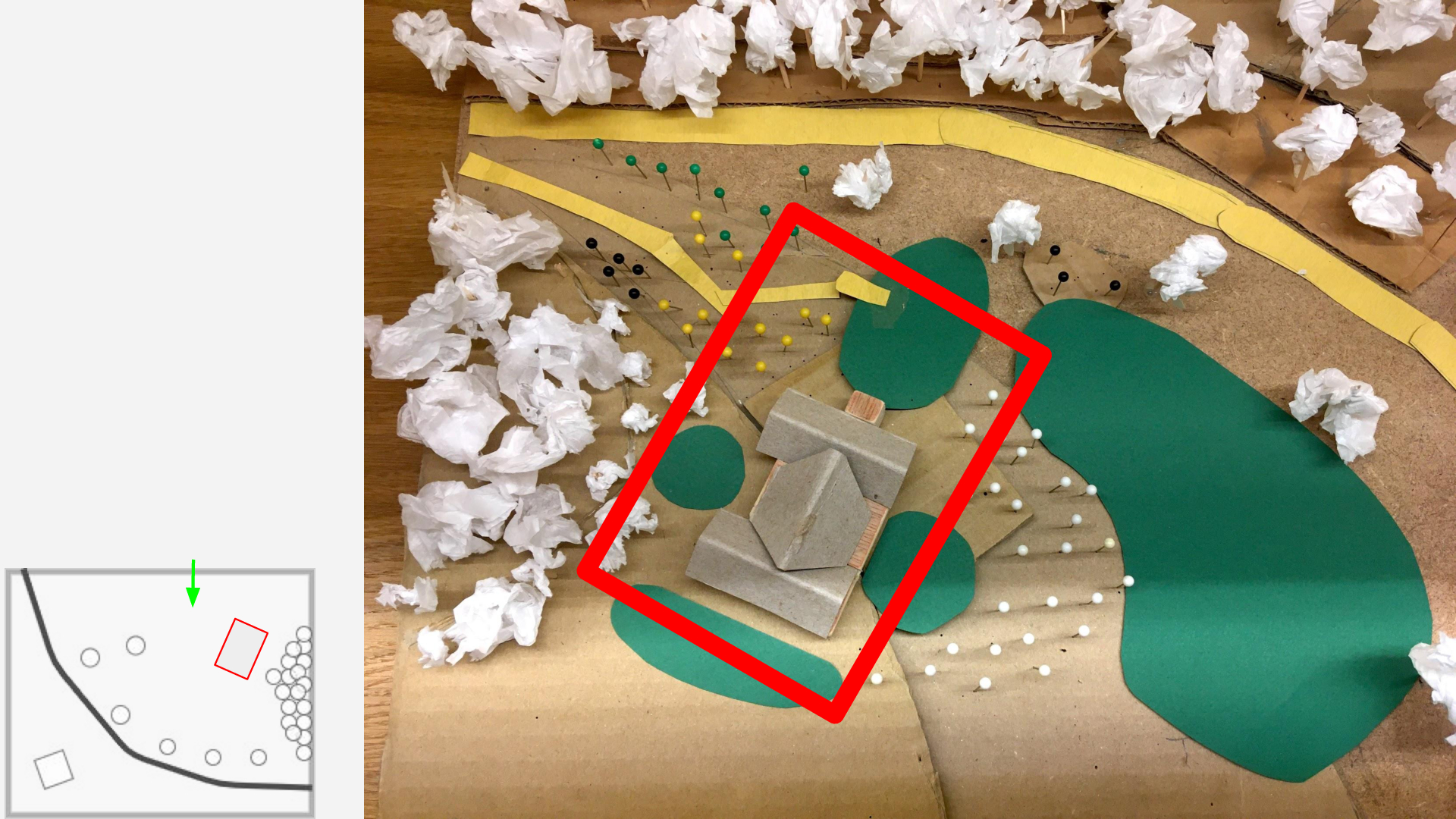
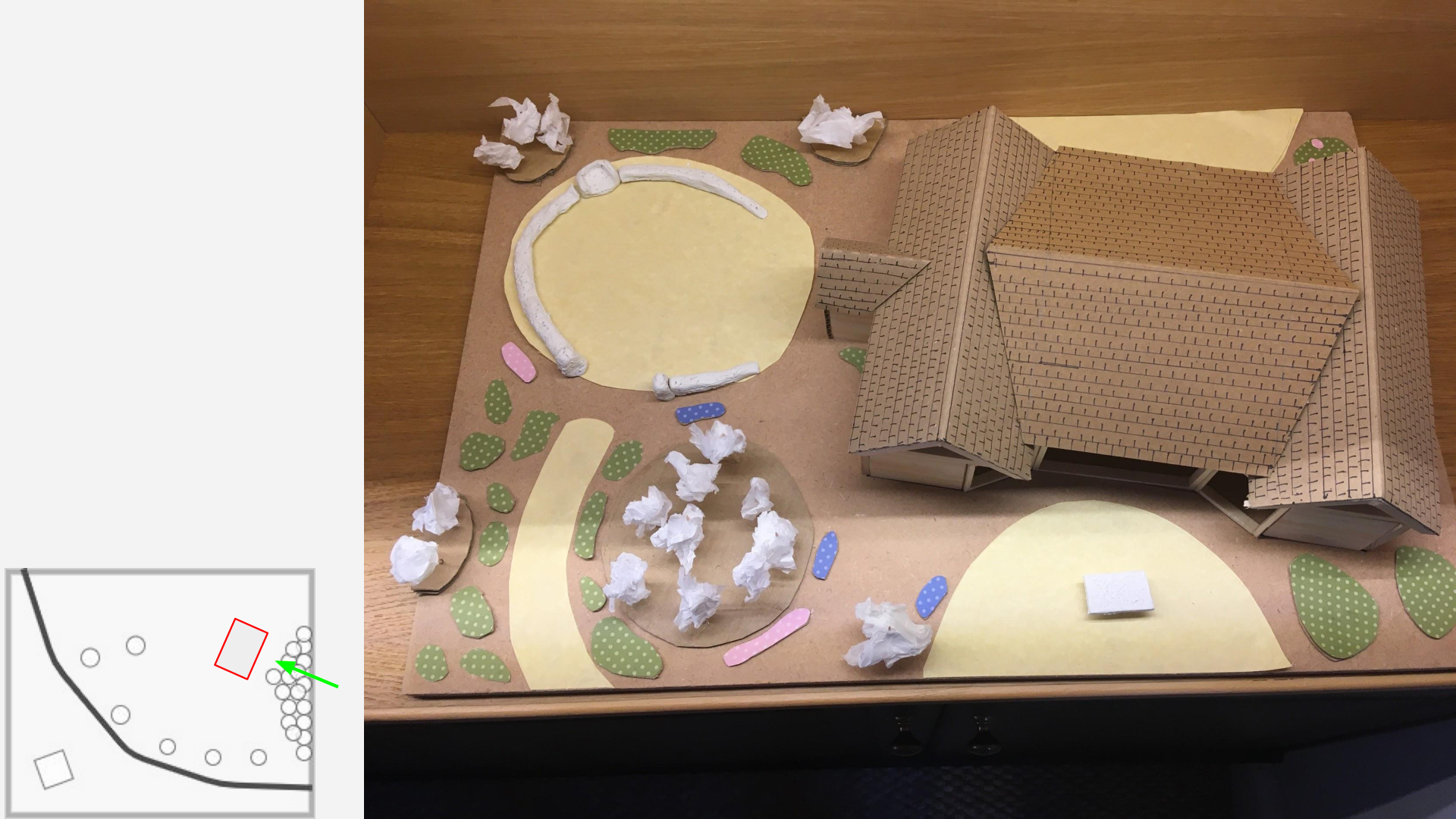

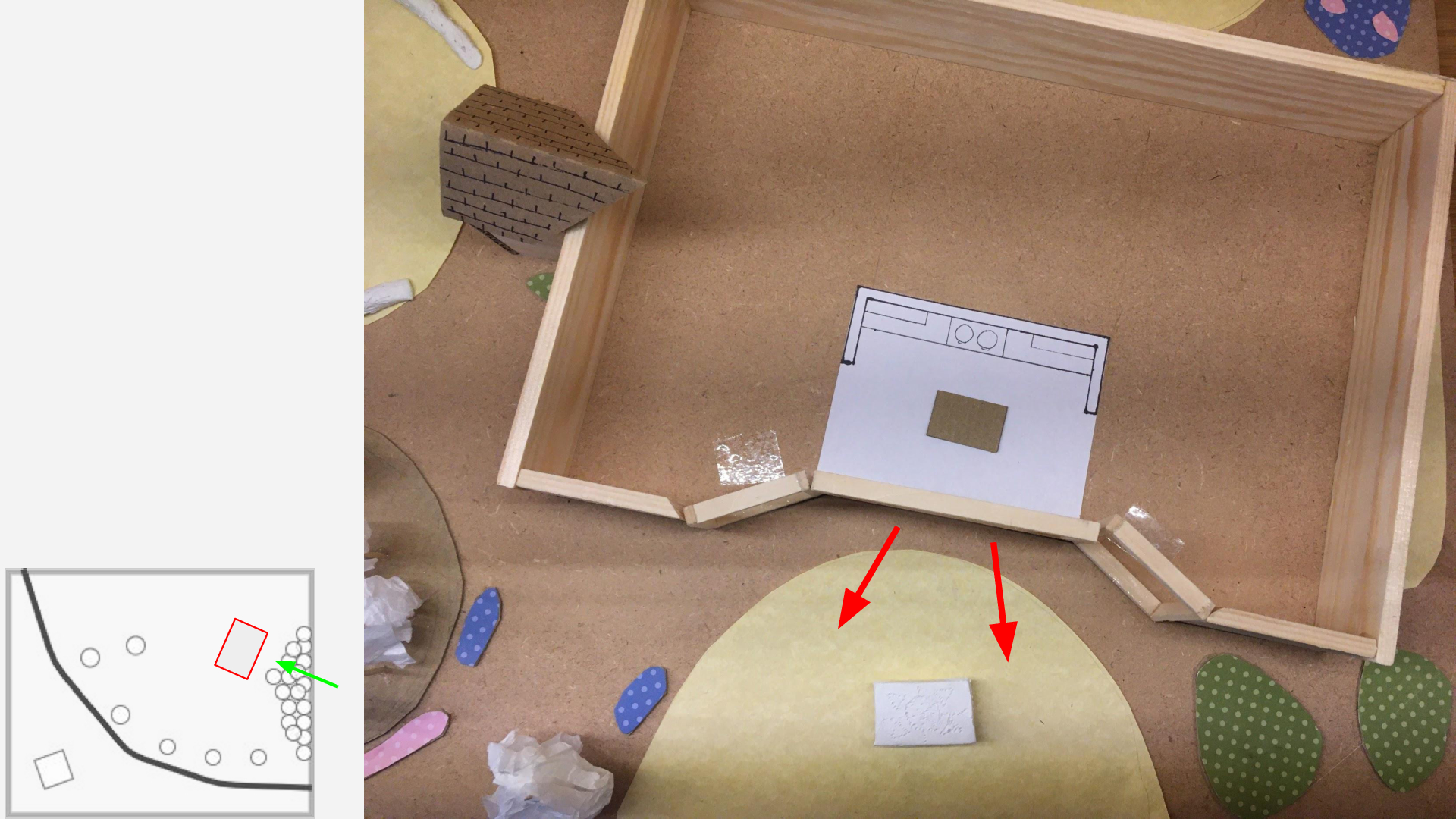
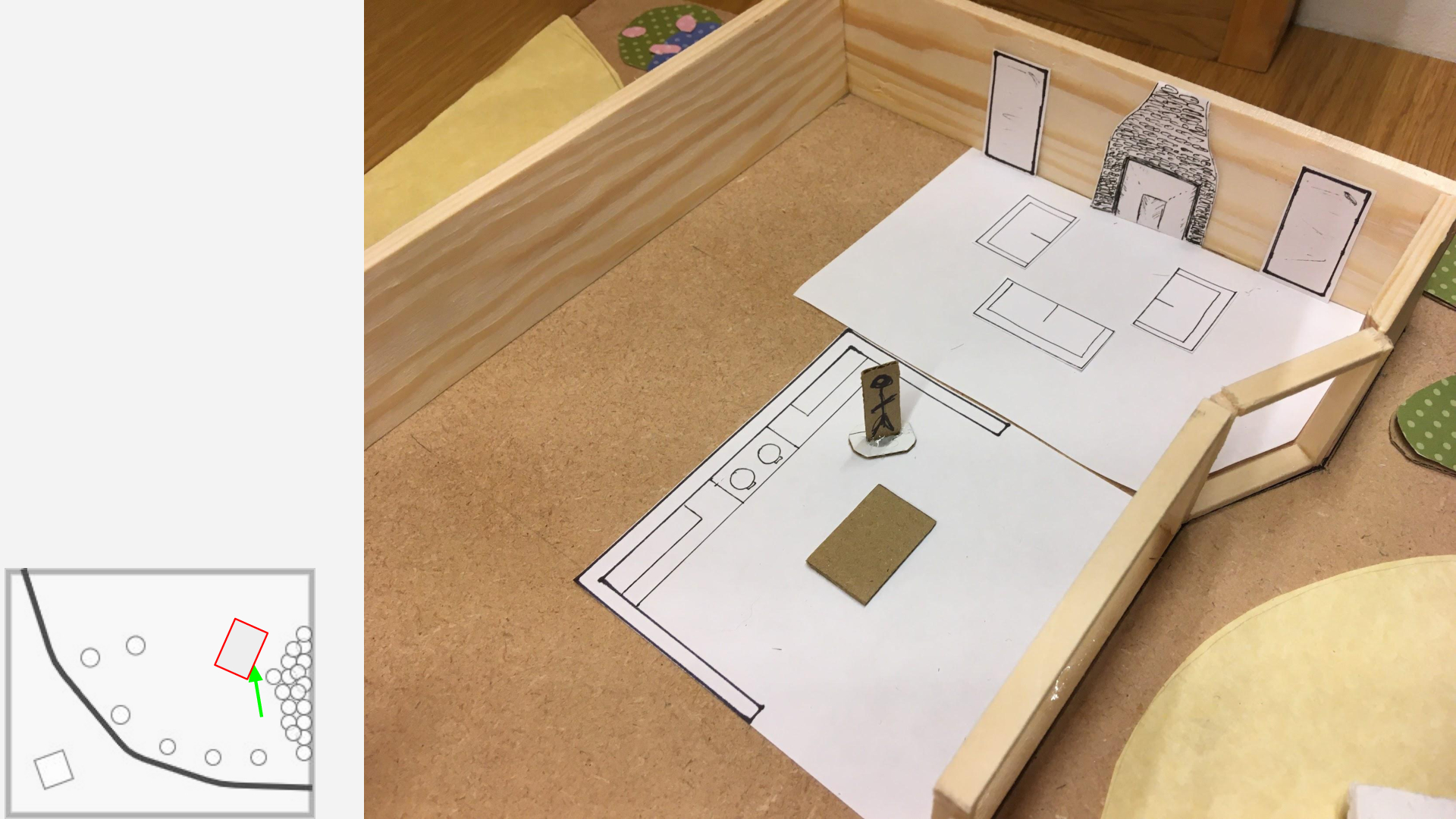
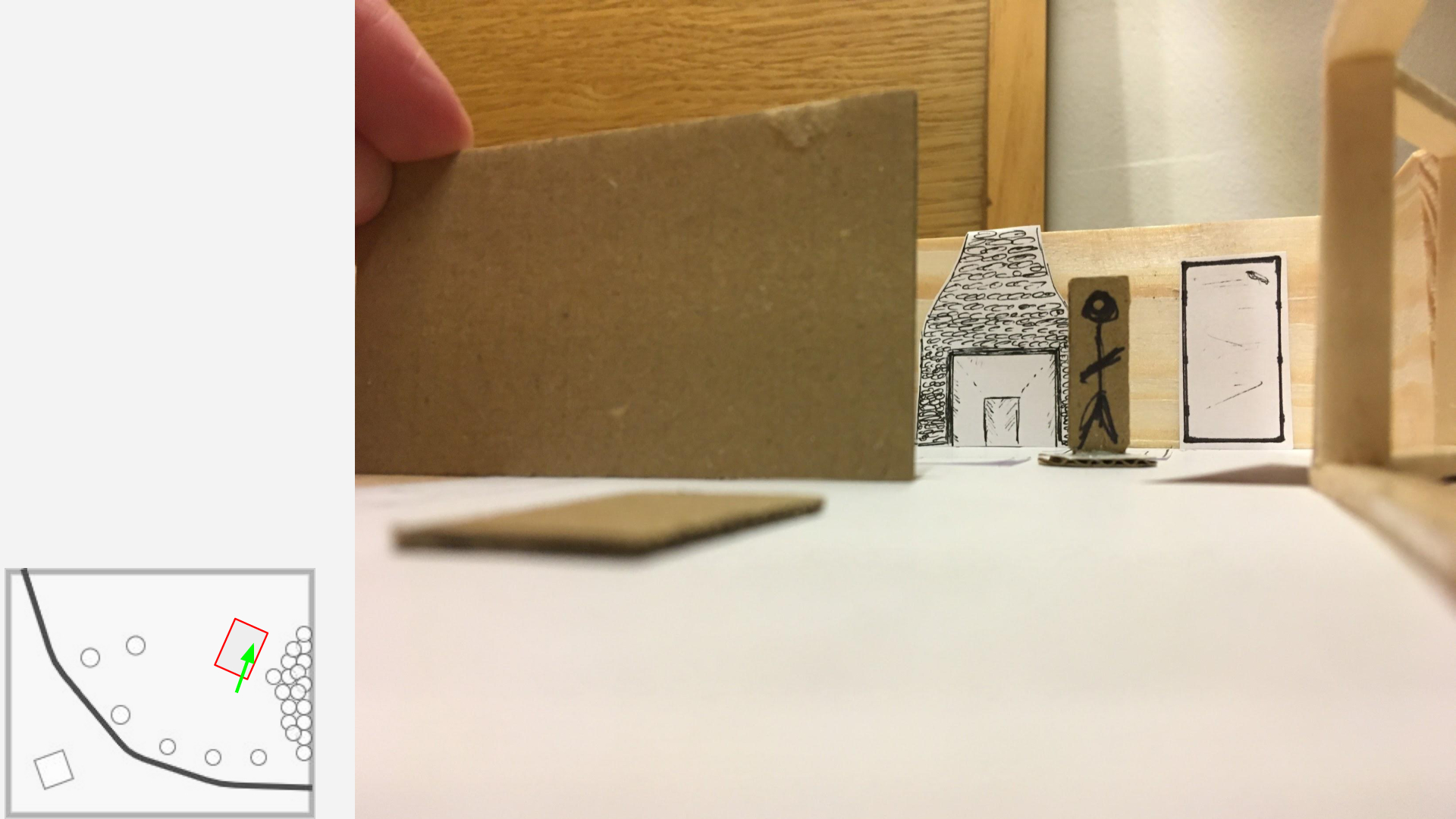
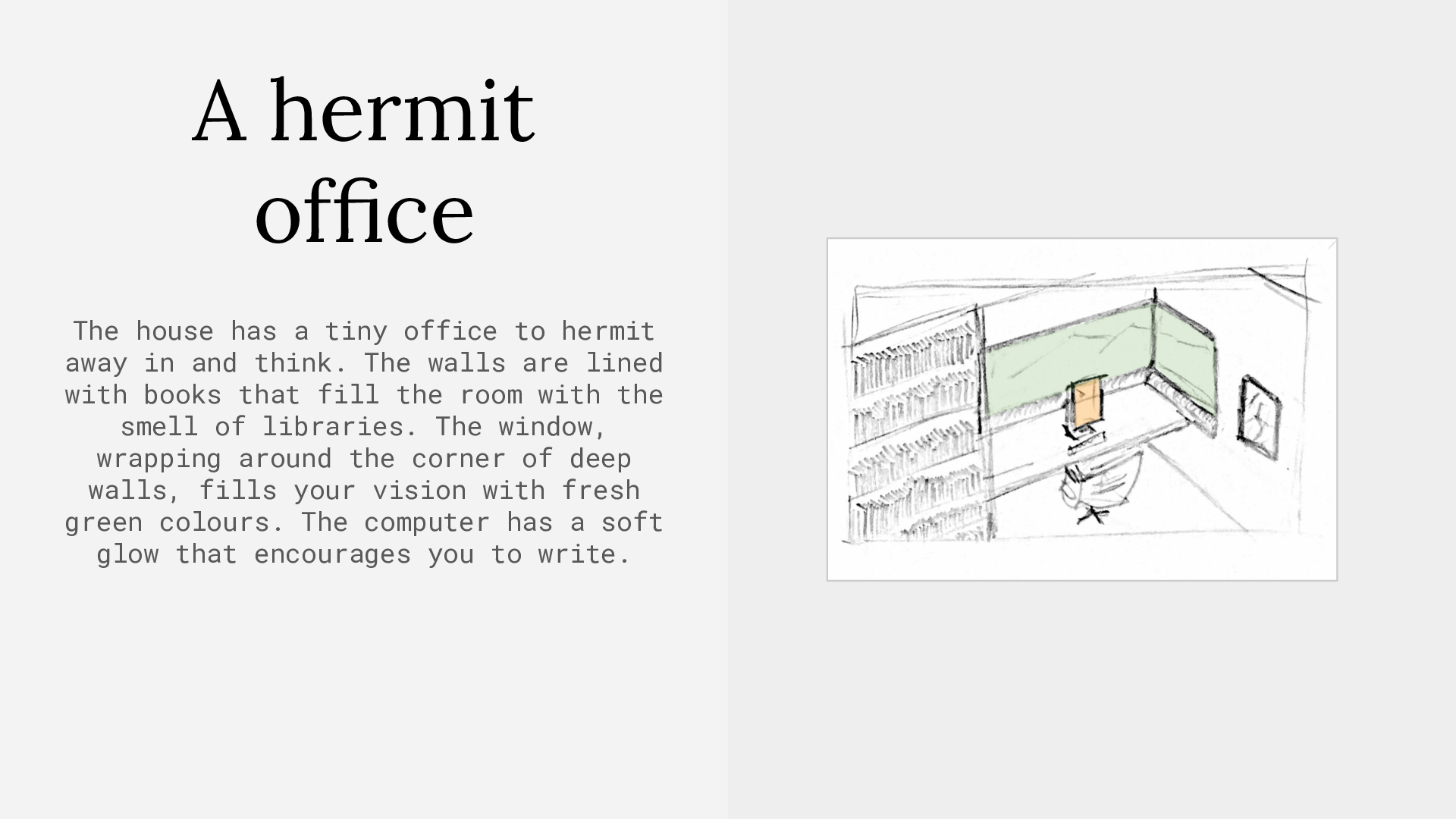
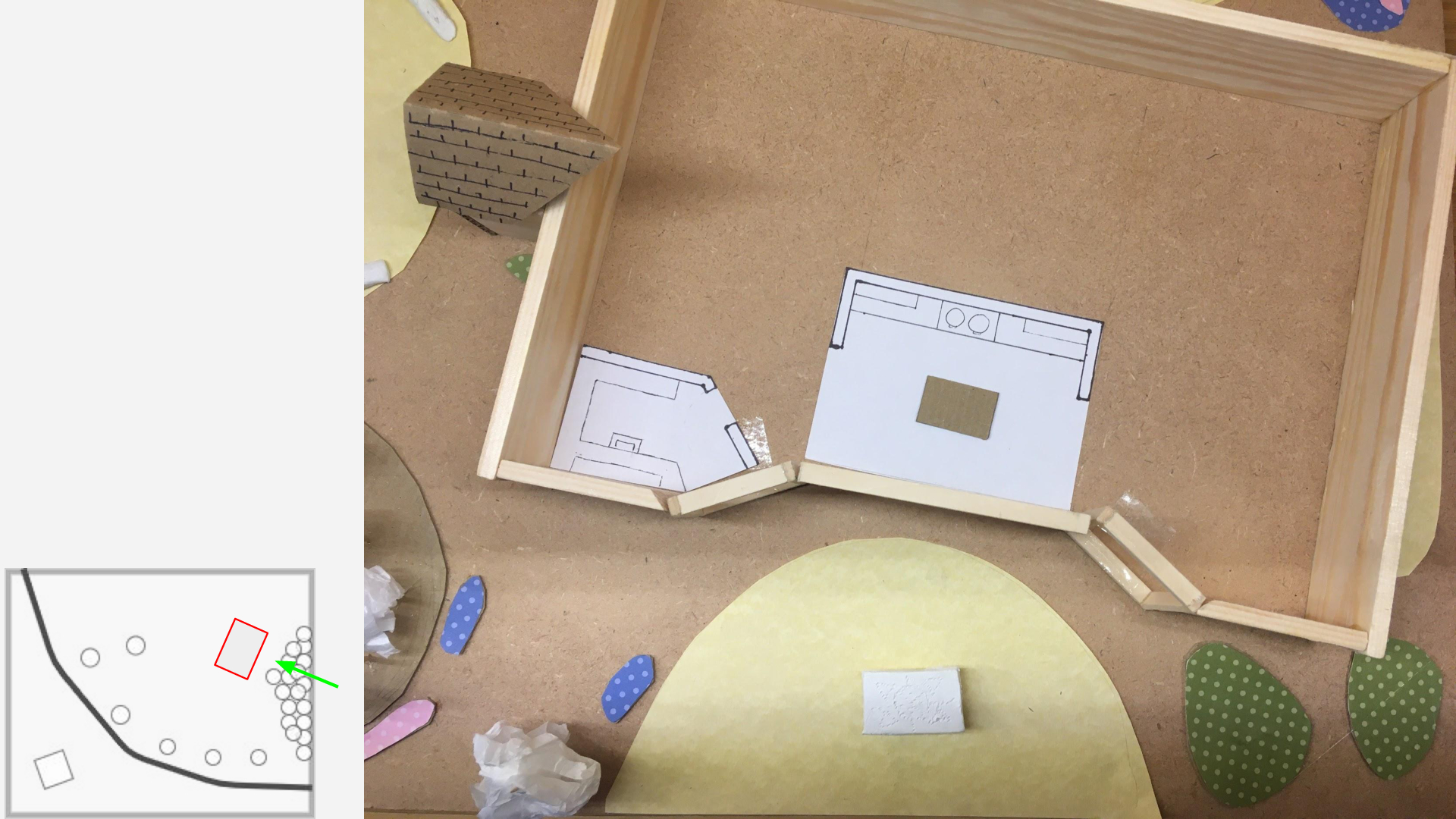
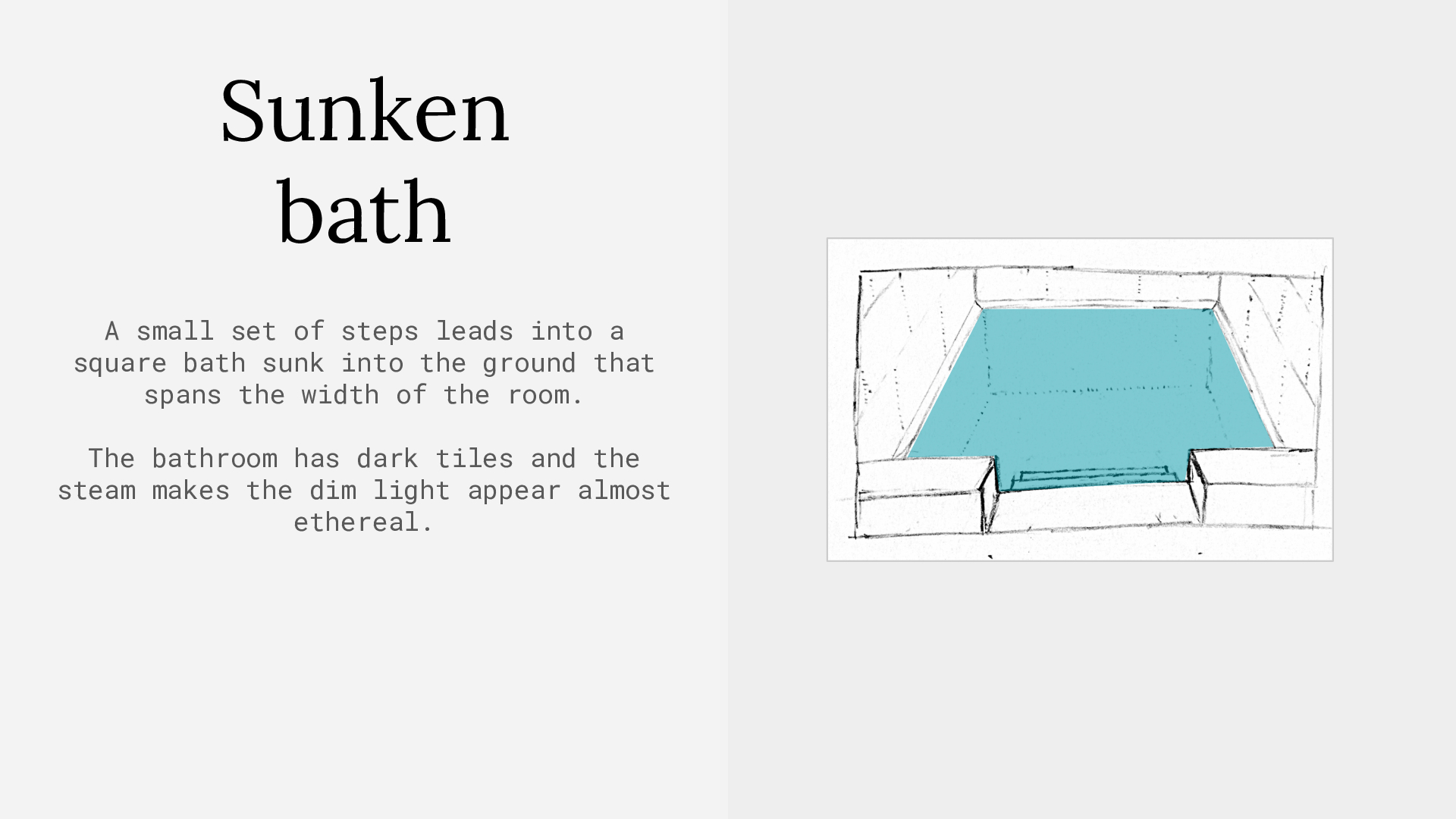
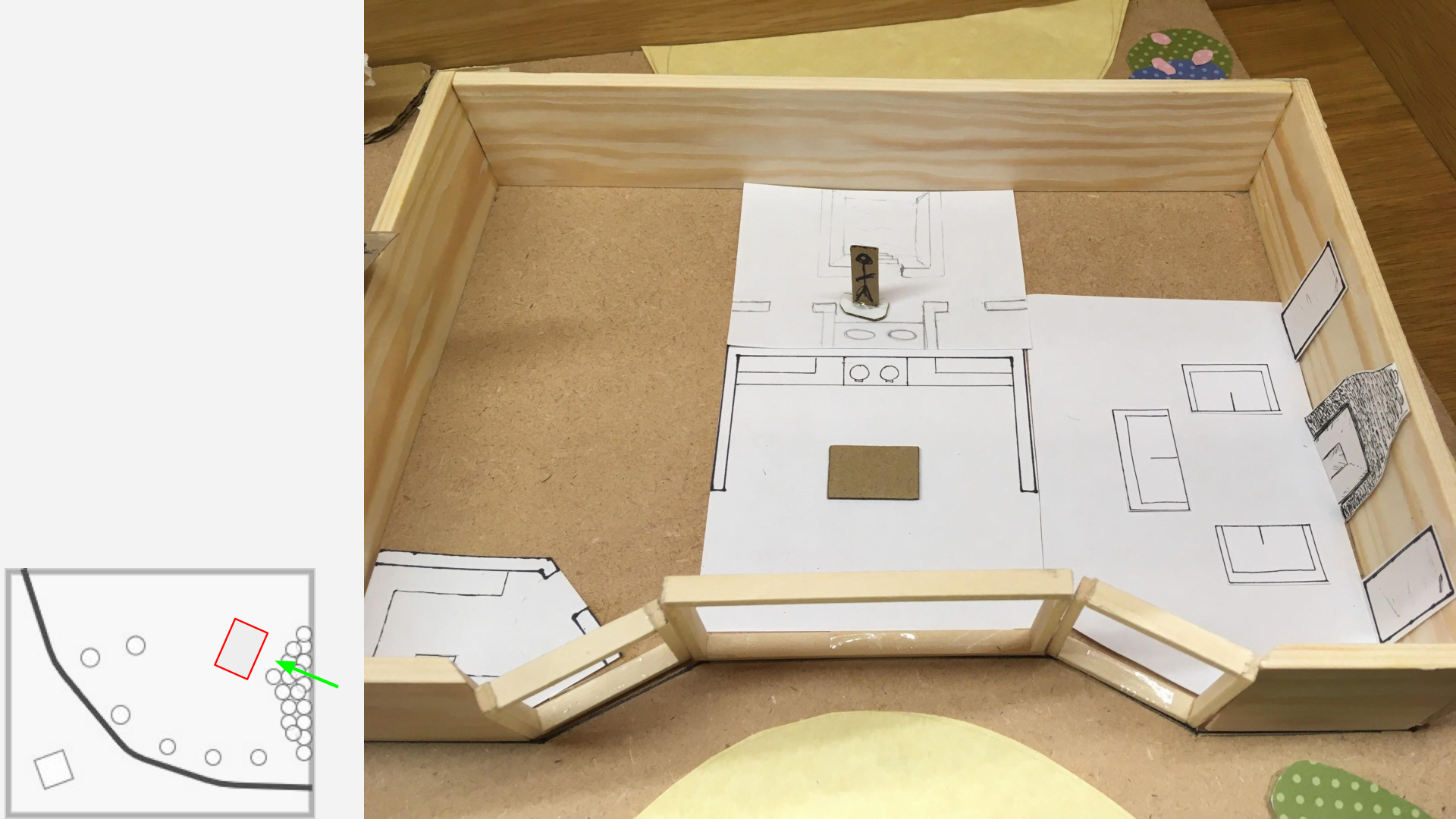
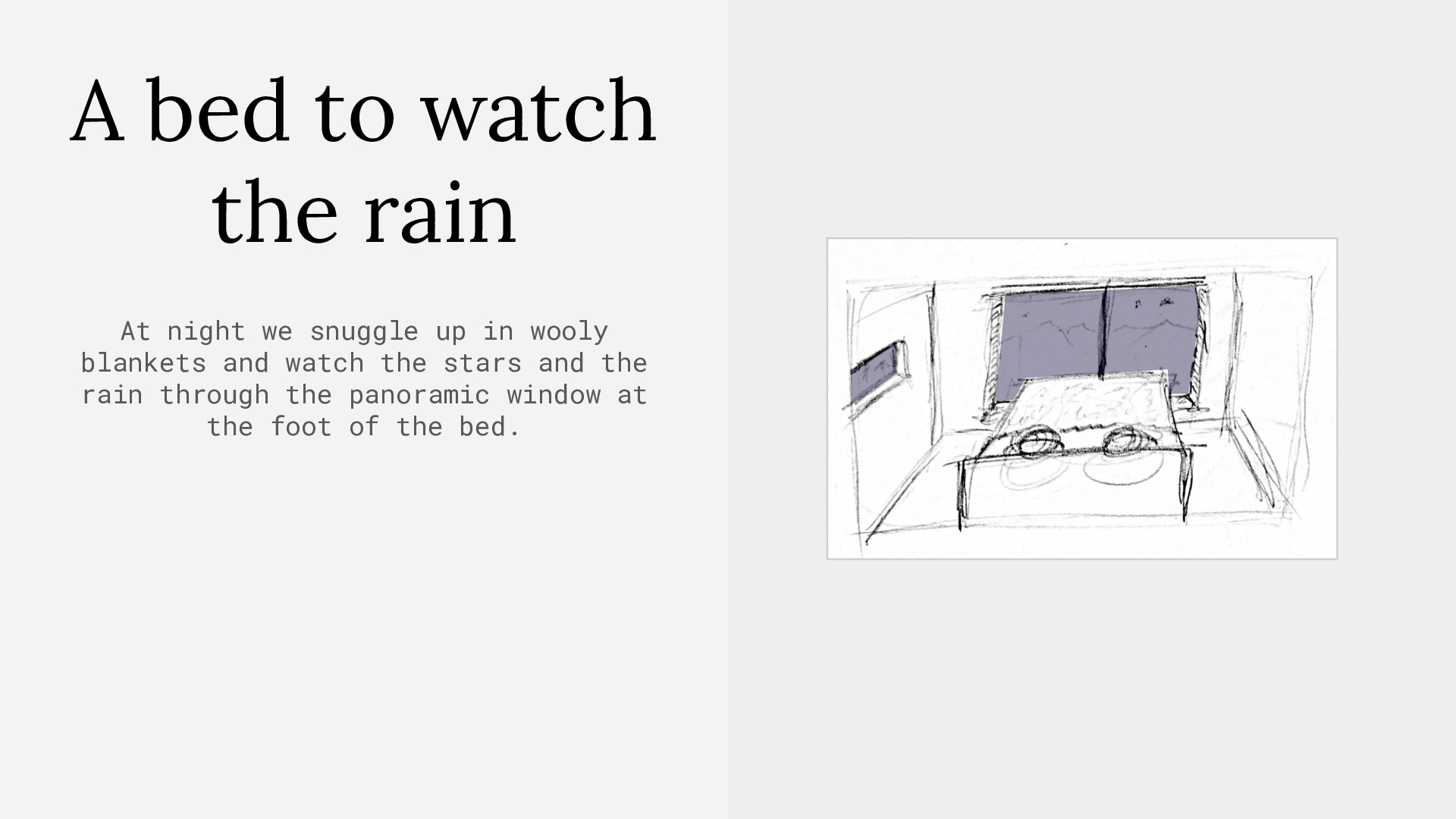
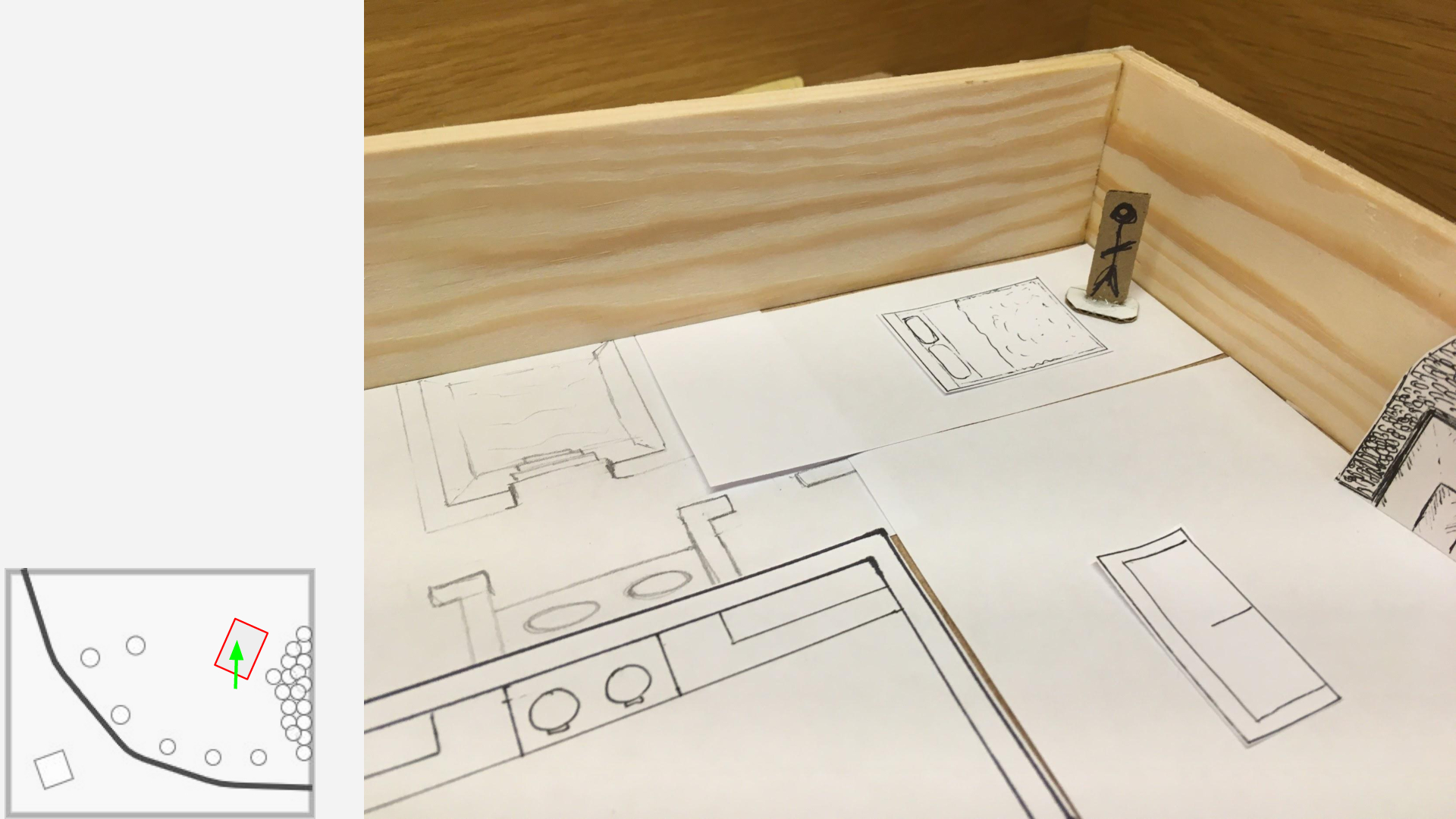
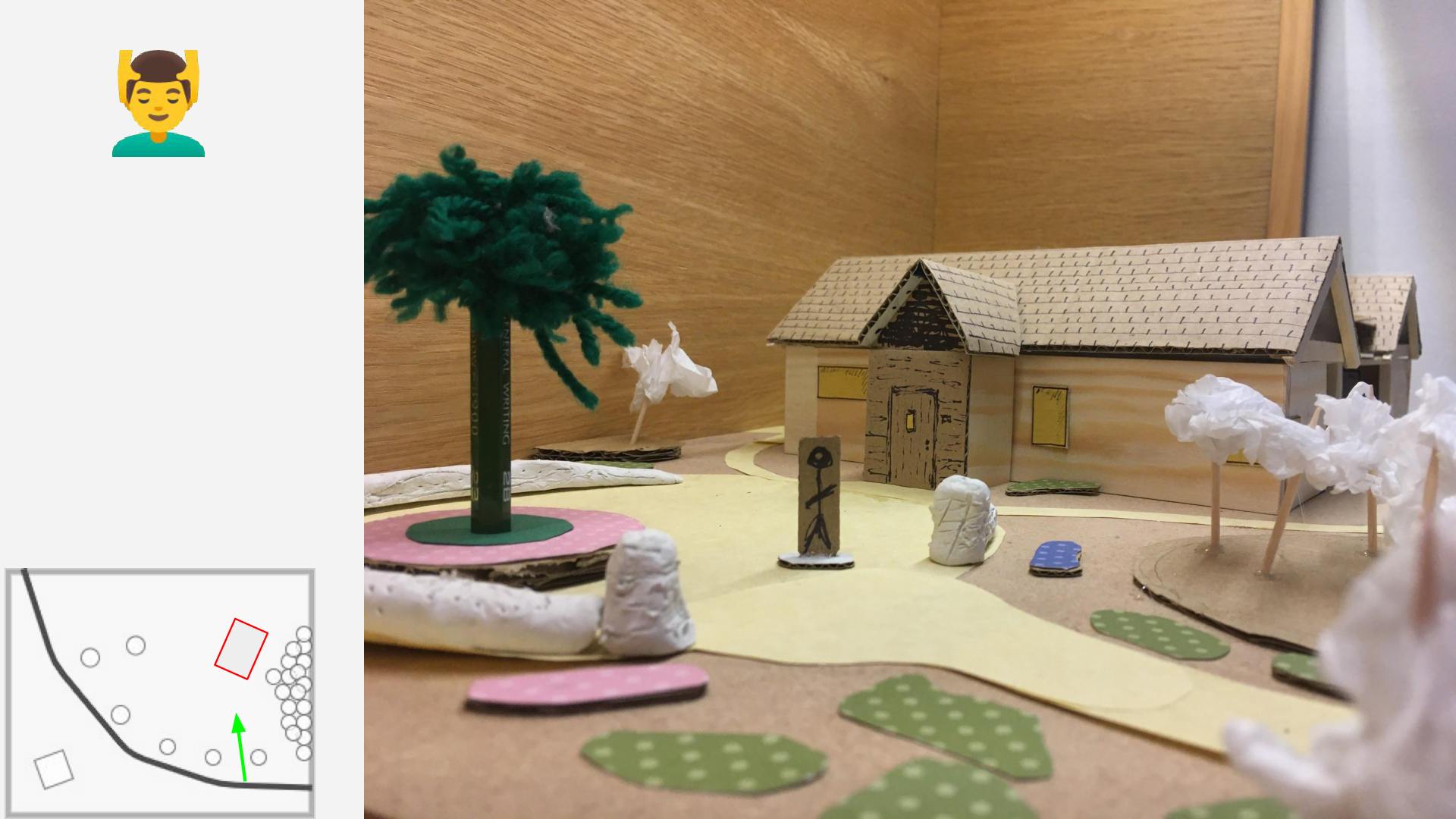
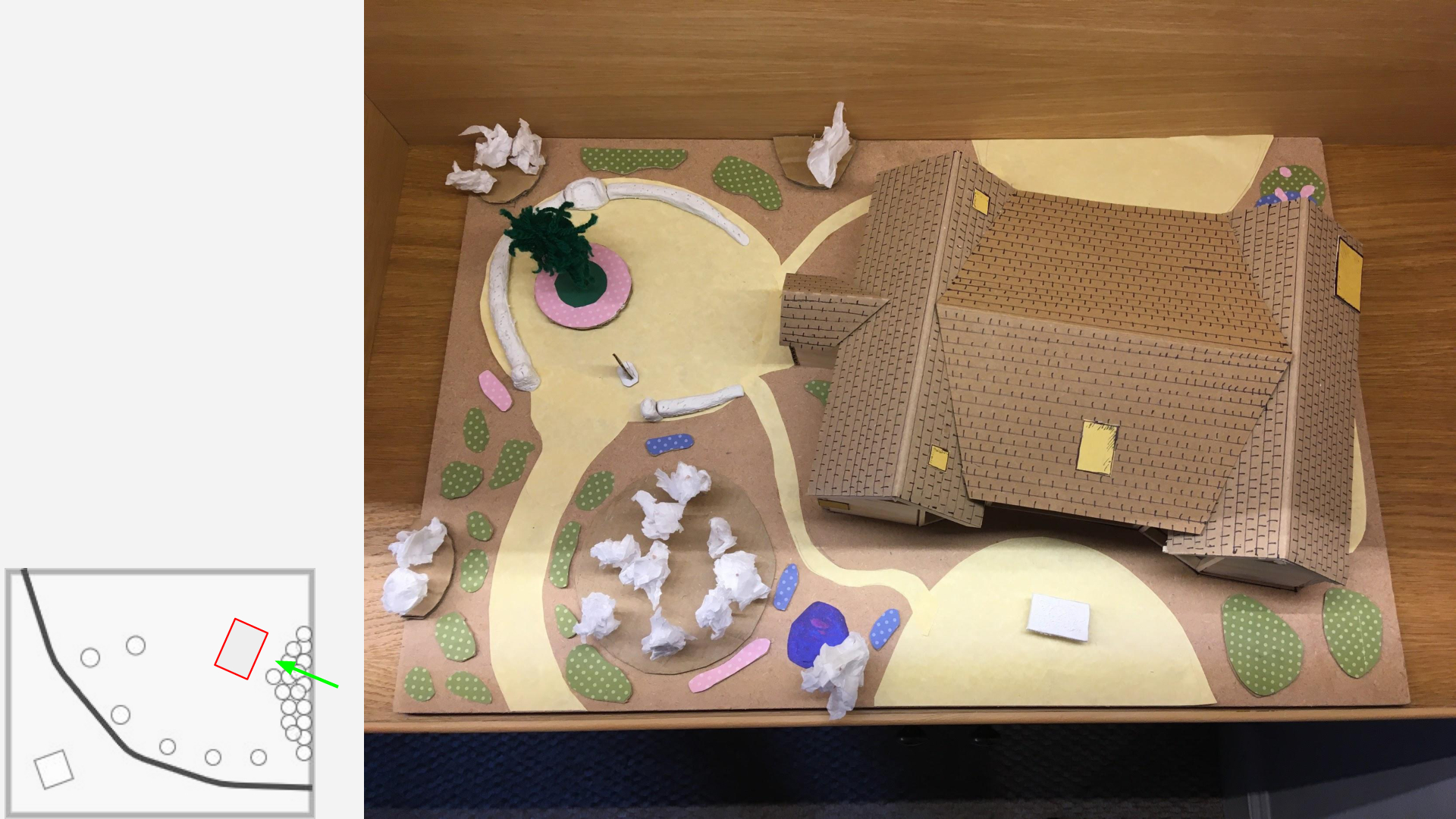
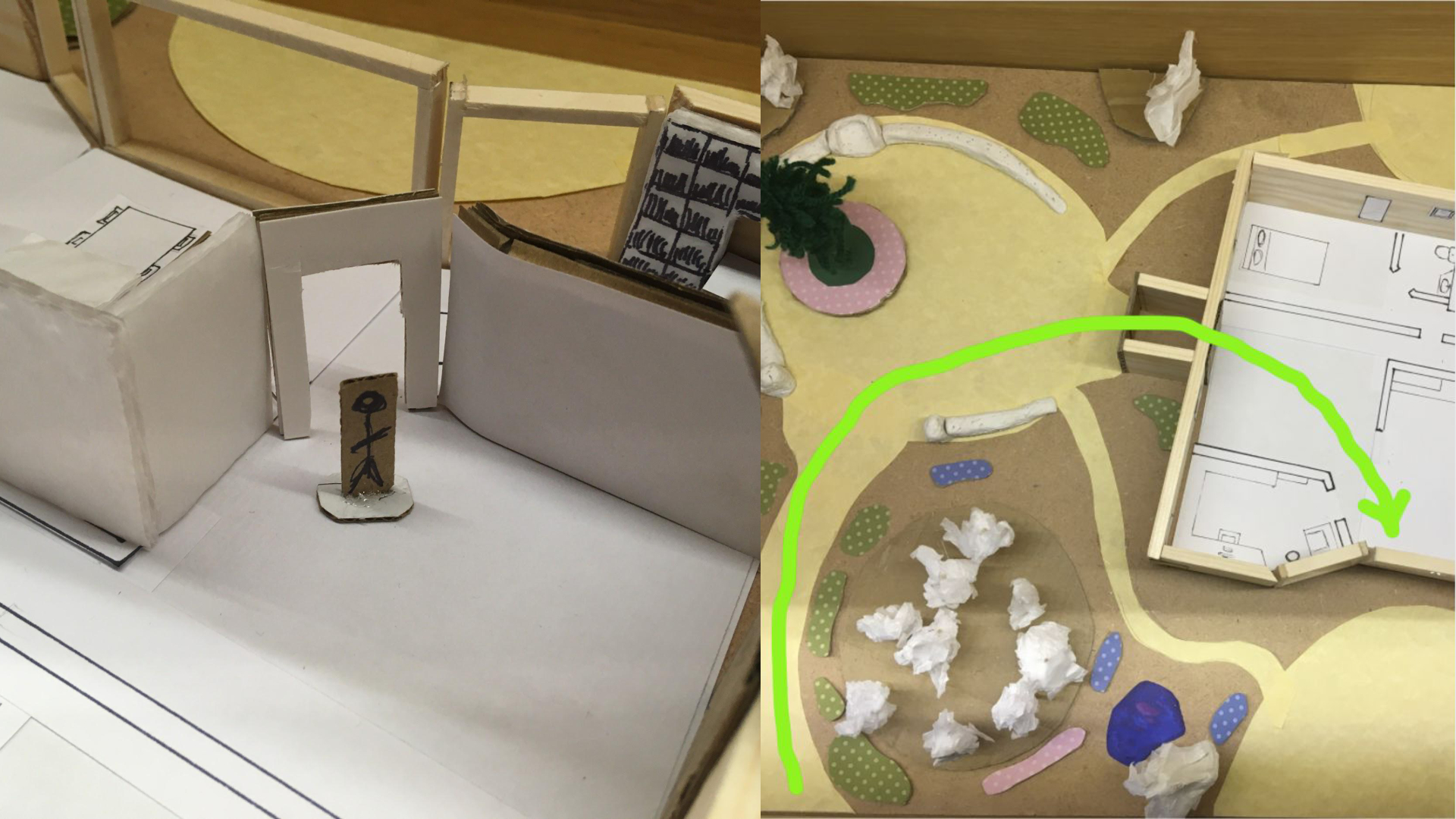
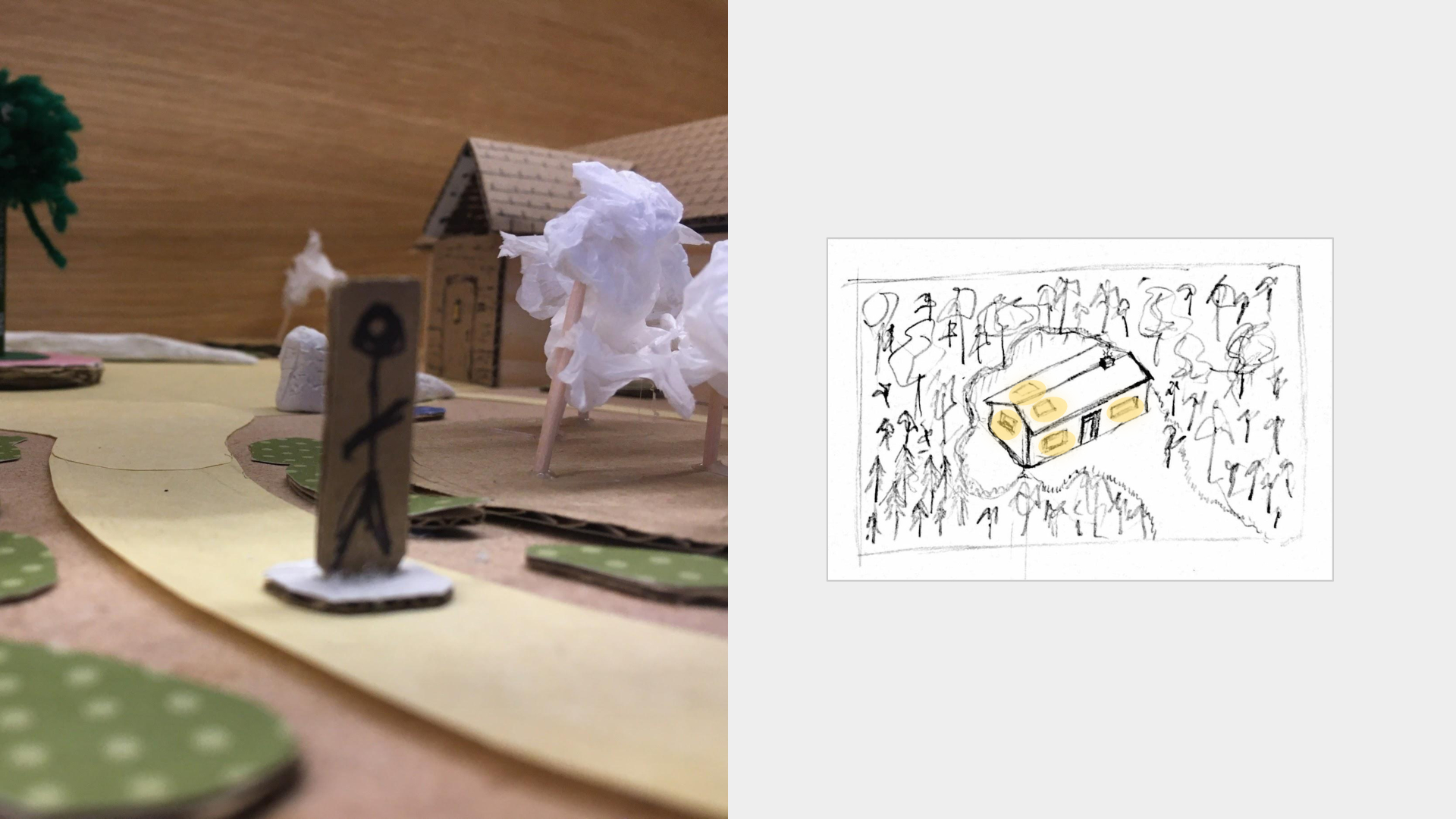
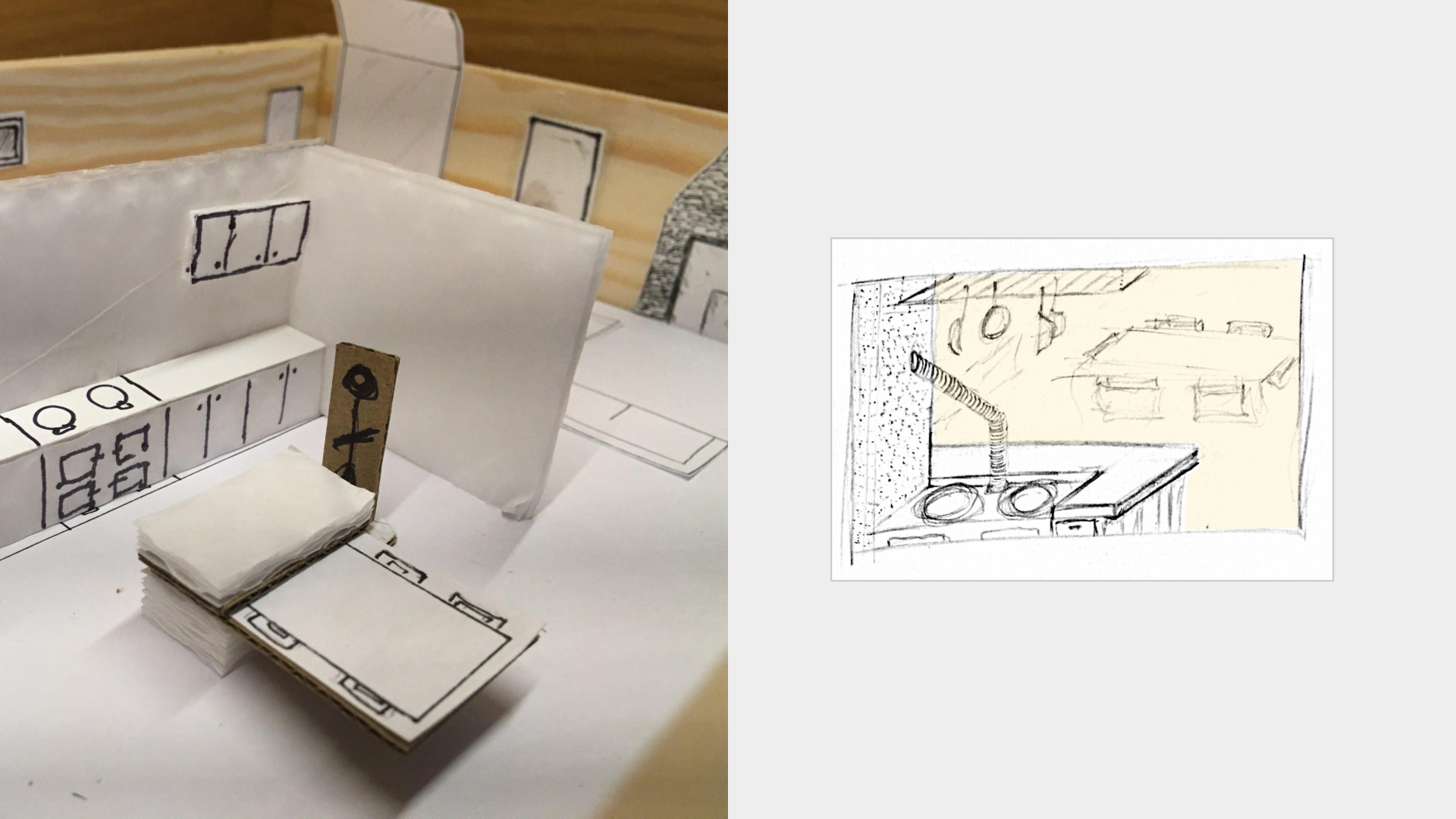
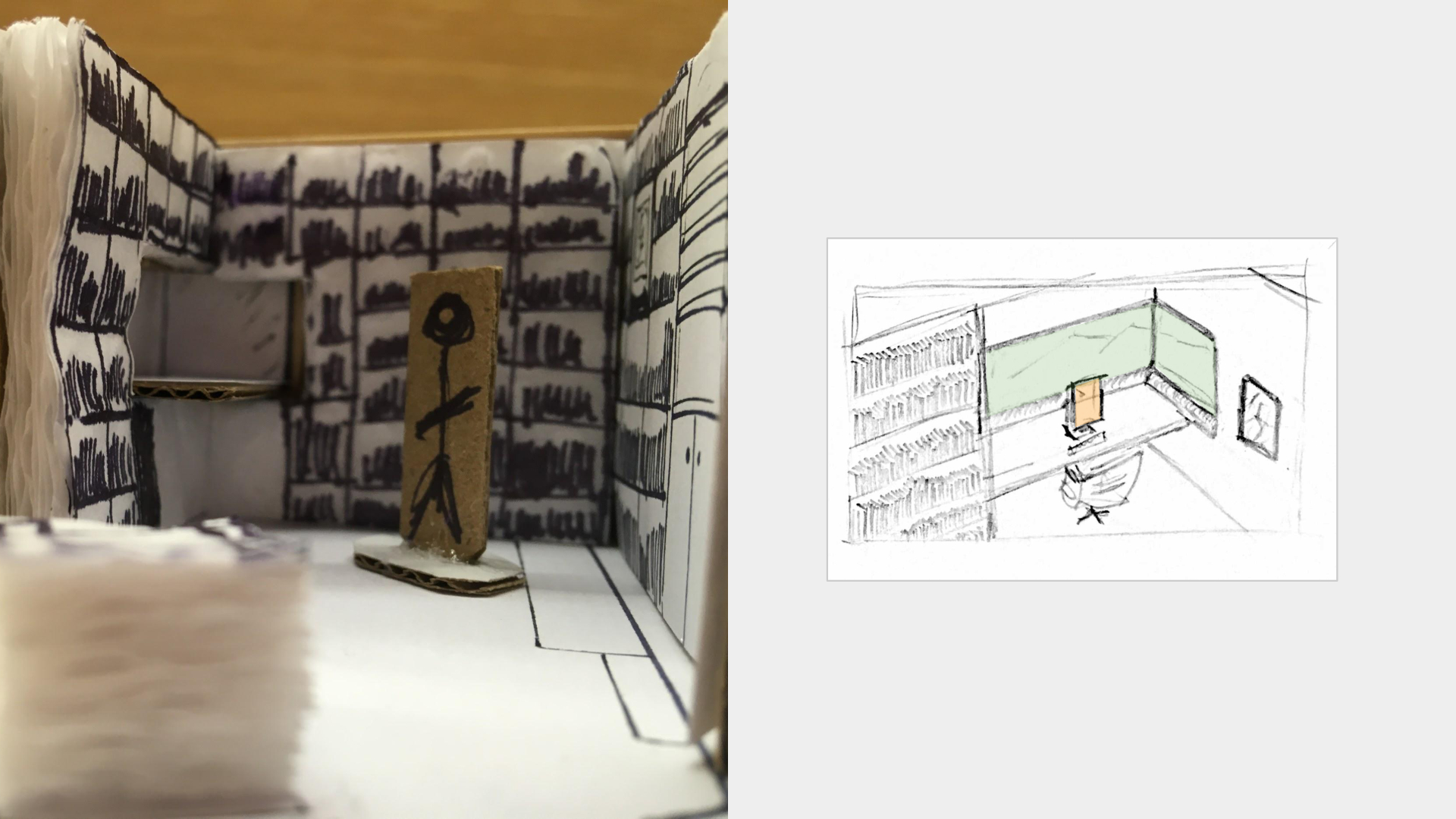
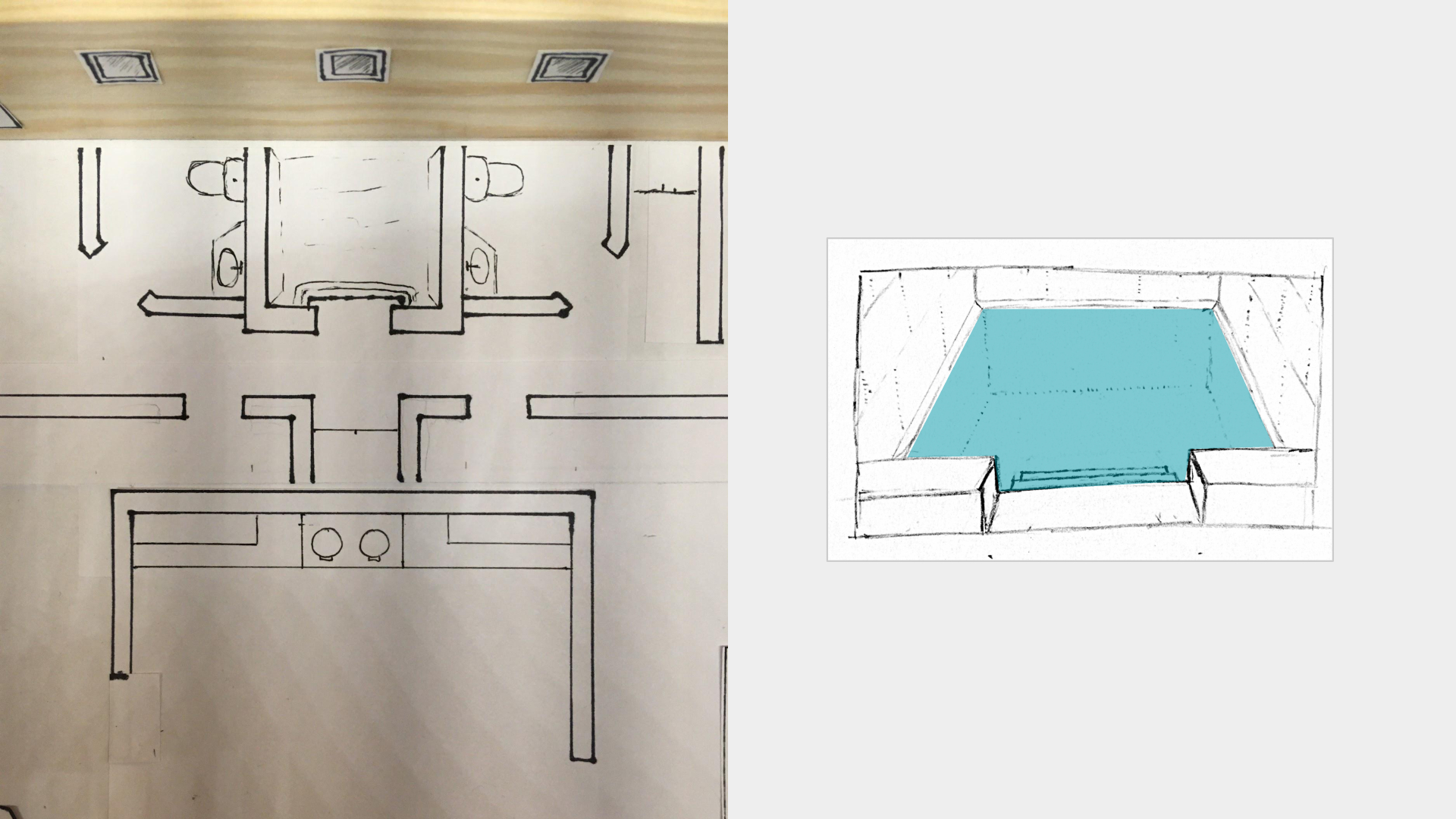
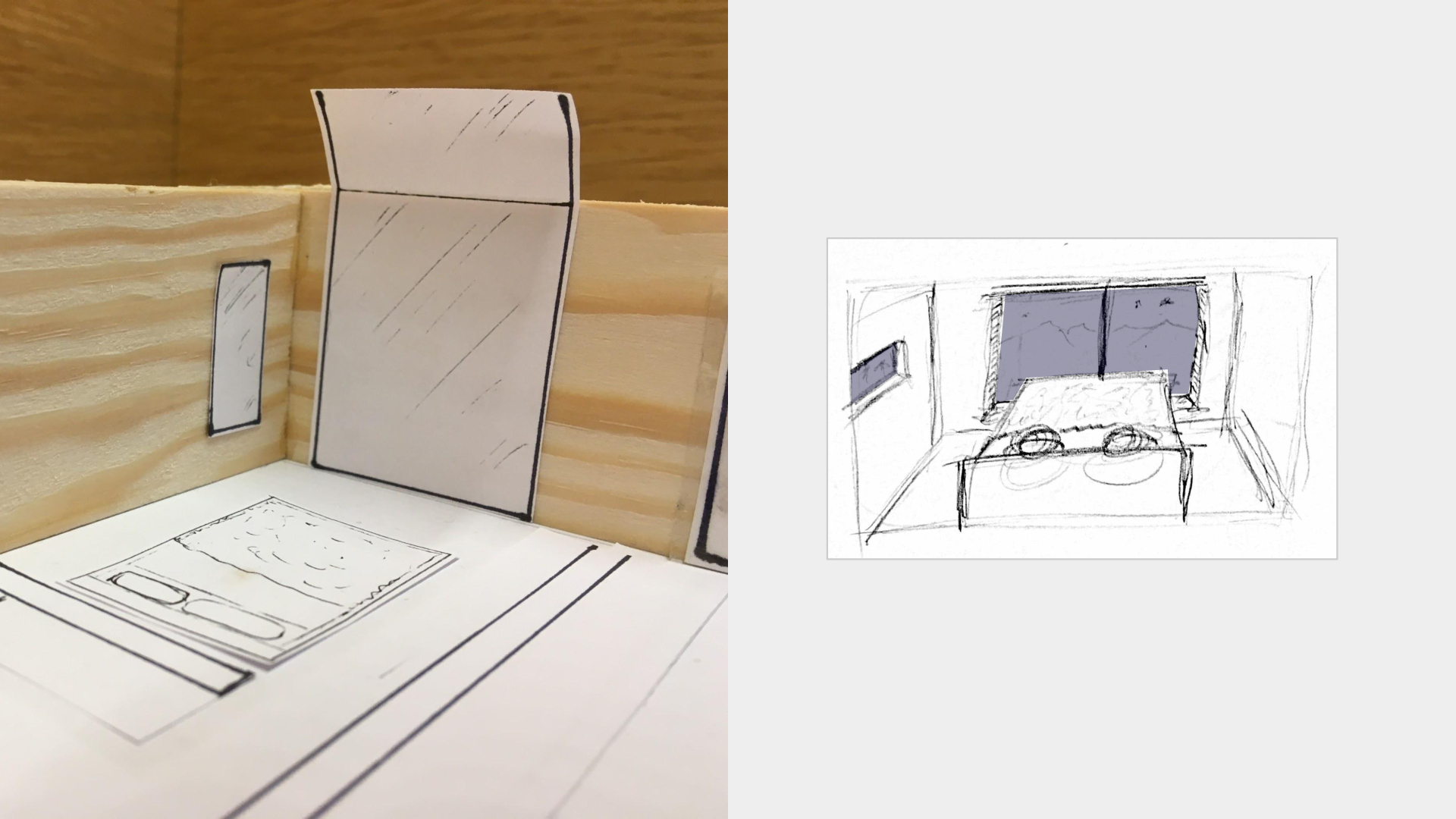
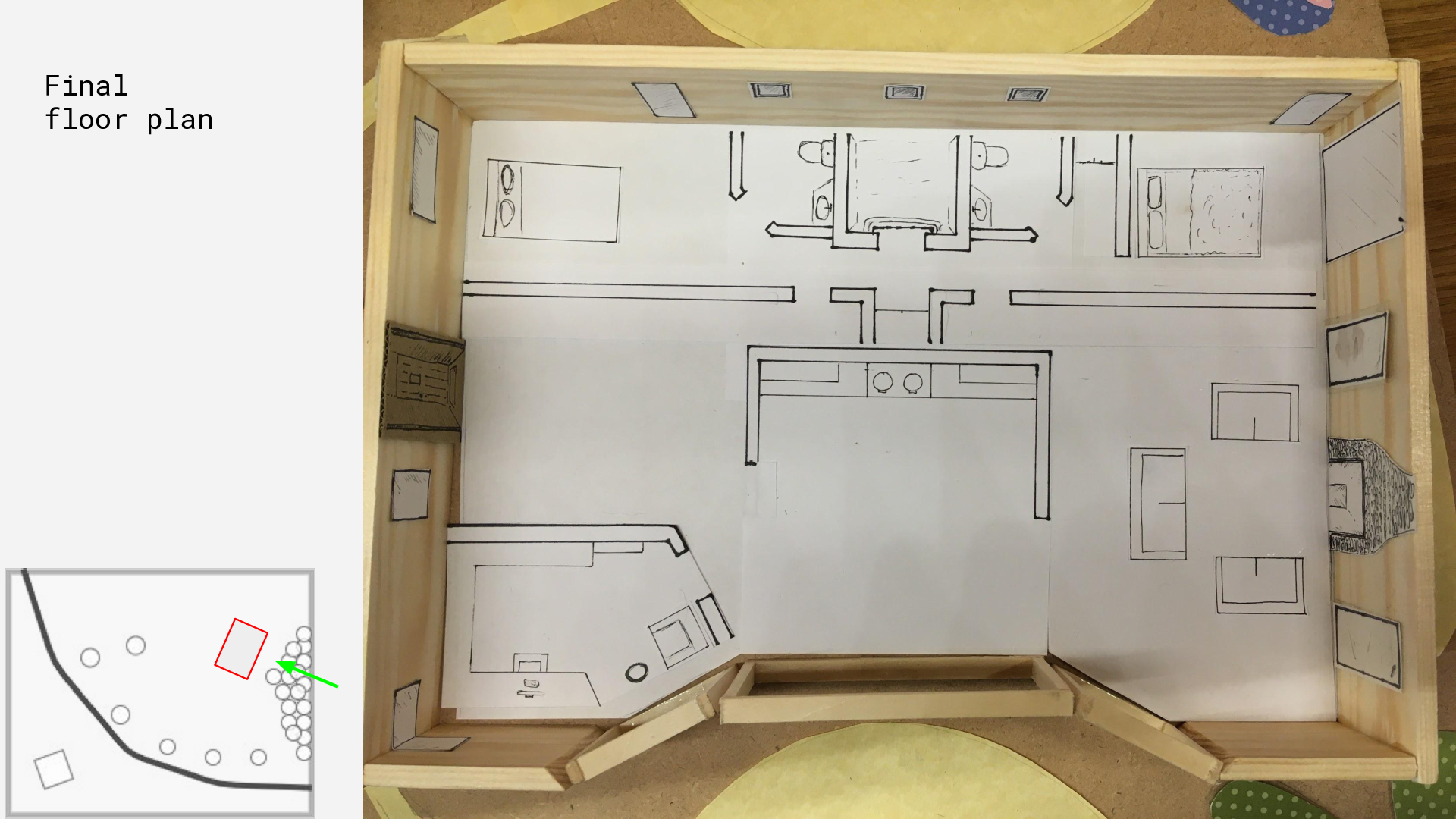
Nature of Order
I didn’t quite manage to reach the end of Book 2, but I’m not too far away.
In the last session we each got asked a couple of questions to reflect on what we’ve learned so far.
1. What are the 3 main lessons that you take from the two books, concepts that have changed the way you look at the world and your life?
The idea of seeing through centres in combination with Levels of Scale in particular helped. I’ve used these two ideas somewhat independently previously, but hadn’t connected them in the way that Alexander does.
Feeling as an instrument. I’ve always had this deep sense of feeling in certain places or with certain objects, but had never thought of it so explicitly as a tool to help guide design decisions.
2. What are the 2 concepts or ideas in the books that you are less convinced about, and why?
Mirror of the Self. I think I understand what he’s getting at, but the way it’s all phrased just does nothing for me. I also struggle with the alleged objectiveness of it. We did have a discussion about this and agreed that it’s more a statistical objectiveness rather than 100% agreement, but with that in mind I’m not sure how useful a tool it is in decision making in small groups.
3. In what way have the lessons of the books changed your practice? your own work? How would you like it to change?
Sequencing and how that helps unfolding. Getting the ordering of decisions right is now much higher on my radar.
I was also inspired at the amount of observation and reflection that Alexander did on his work, and also how he wrote it down.
Reading notes this week…
